Spark curiosity. Ignite learning.















































































Create and manage







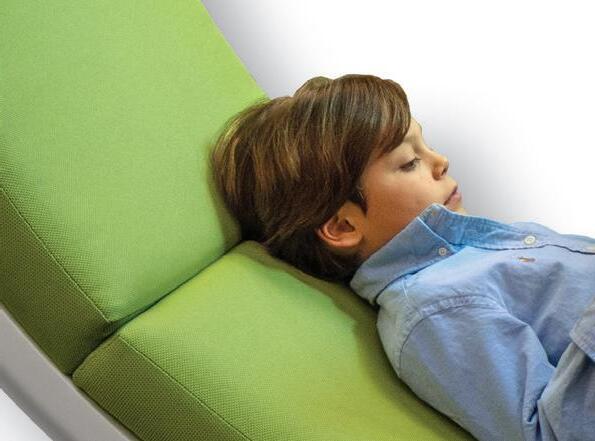















































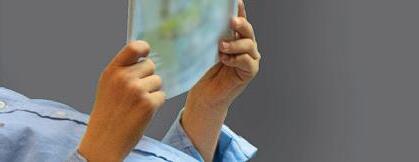







EFFECTIVE ZONES


































Public & school libraries: THE PERFECT PARTNERSHIP WEEDING IS EASIER with the right support


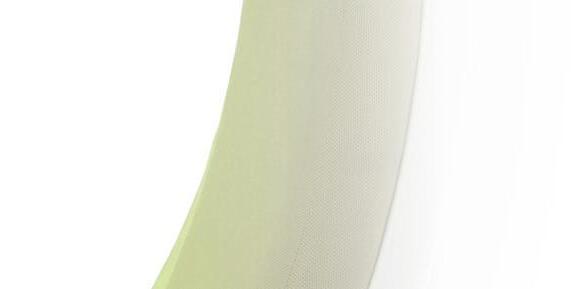



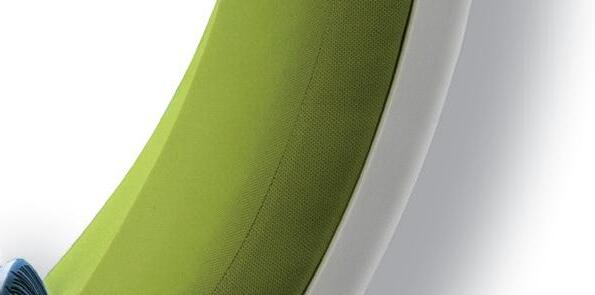












2024 Issue #3
Fueling creativity, collaboration, and learning opportunities
At Demco, we recognize that the library is so much more than just a space. It’s where lifelong learners come together to create, collaborate, and learn about the world around them. It’s where a young student learns about momentum through creating a marble maze in a makerspace or where a patron discovers a love for elephants from reading a new book their librarian recommended to them.
While the library connects all of us, it’s the people there that make the true difference. Librarians play a crucial role in their libraries and communities: connecting others, providing resources and programming to complement curriculum, and introducing learners to the joys of reading.
In this issue of the Demco Array, you’ll find articles and insights from innovators and thought leaders. You'll see tips for making the most of your library's limited space, strengthening relationships with your local community, transforming your library into a beacon of learning, winning support for weeding, optimizing your makerspace, and more.
We hope this latest issue empowers you in your role and helps you create an even more engaging learning environment that sparks curiosity, ignites learning, and continues to inspire those around you. Enjoy!
 Chad Edwards, President
Chad Edwards, President





OUR MESSAGE
The Demco Array celebrates the role of librarians and pre-K–12 educators in our communities while sharing an array of ideas and inspiration to help you spark curiosity, ignite learning, and transform lives.
Spark curiosity. Ignite learning.
Get more books checked out
When your library is this eye-catching and engaging, browsing becomes irresistible. And when visitors have fun exploring, you’re certain to see more flip-throughs, finds, and checkouts!






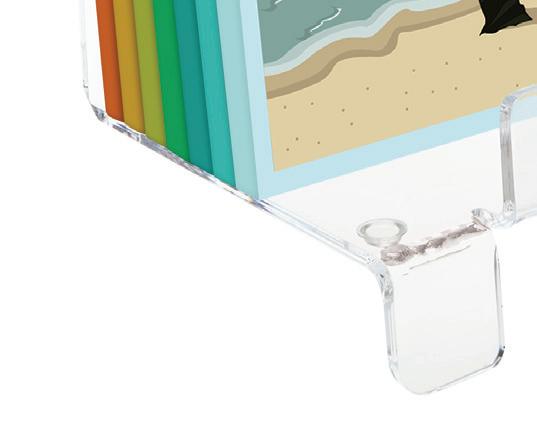

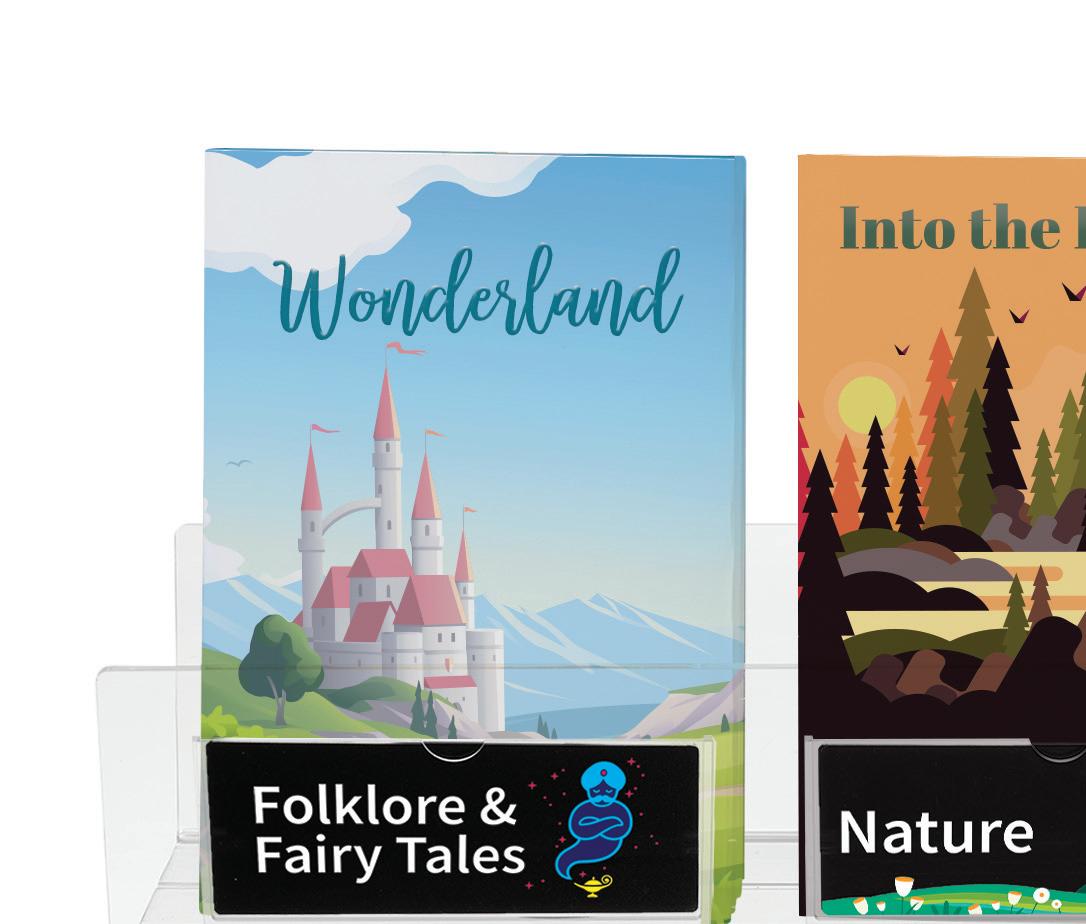

Smart. ShelfSpark products invite independent exploration and increase circulation among new and longtime visitors alike (see how on p. 24).











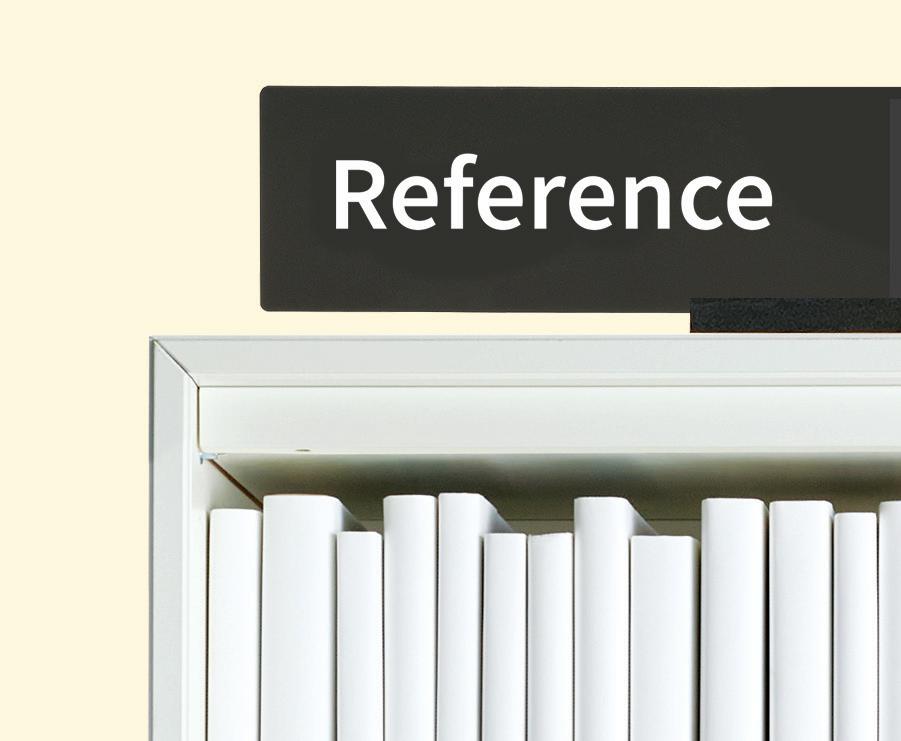

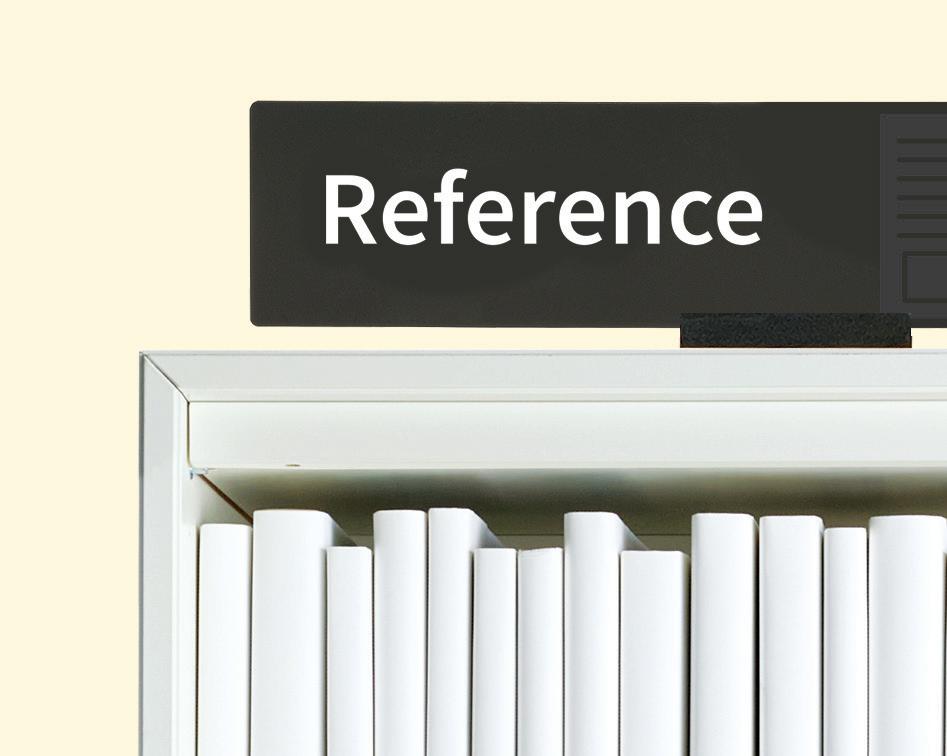


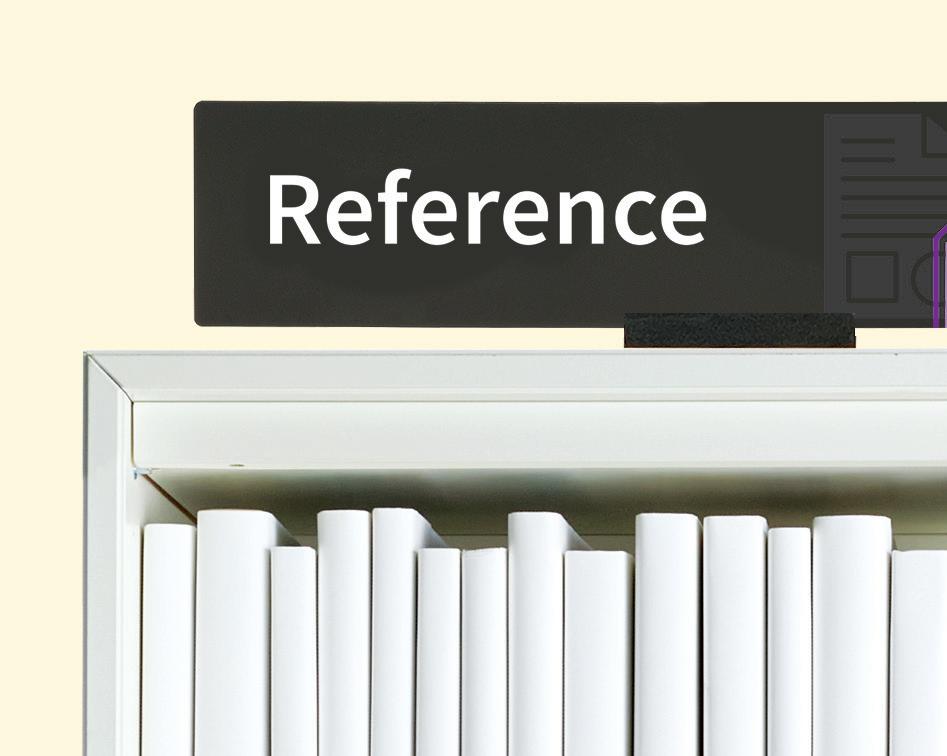




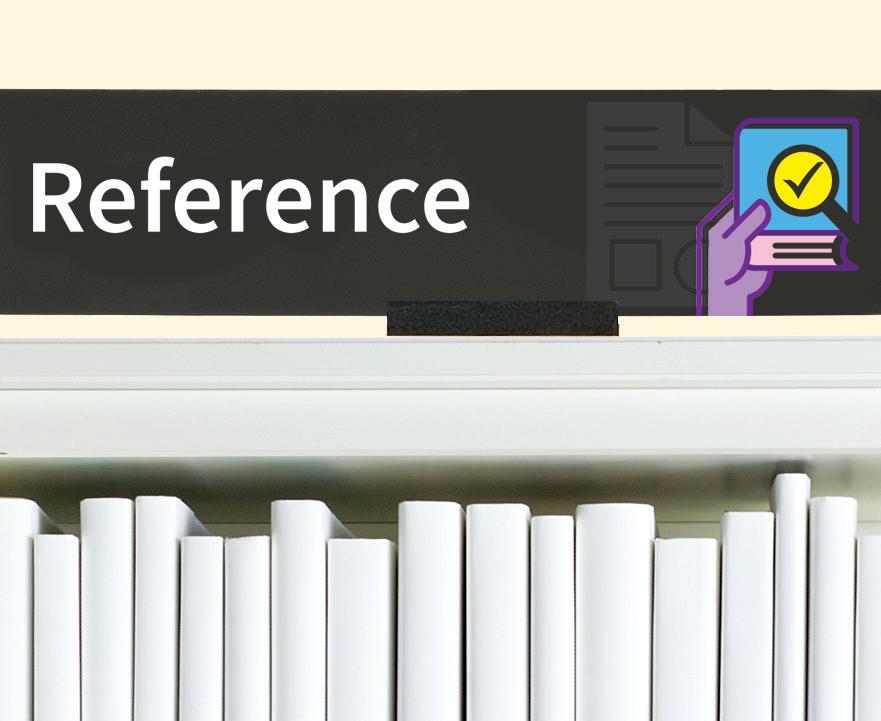
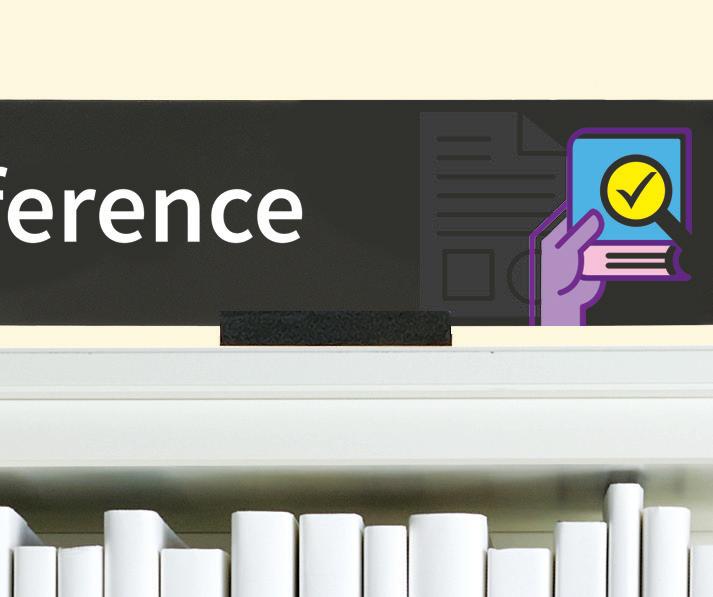
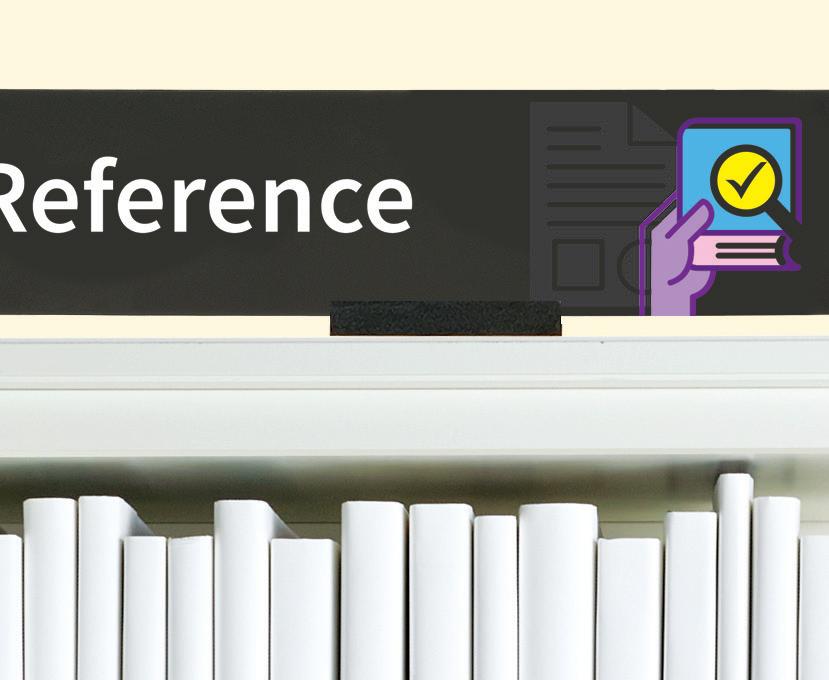

Good looking.
Vibrant designs and durable materials create a cohesive look that will last for years to come.

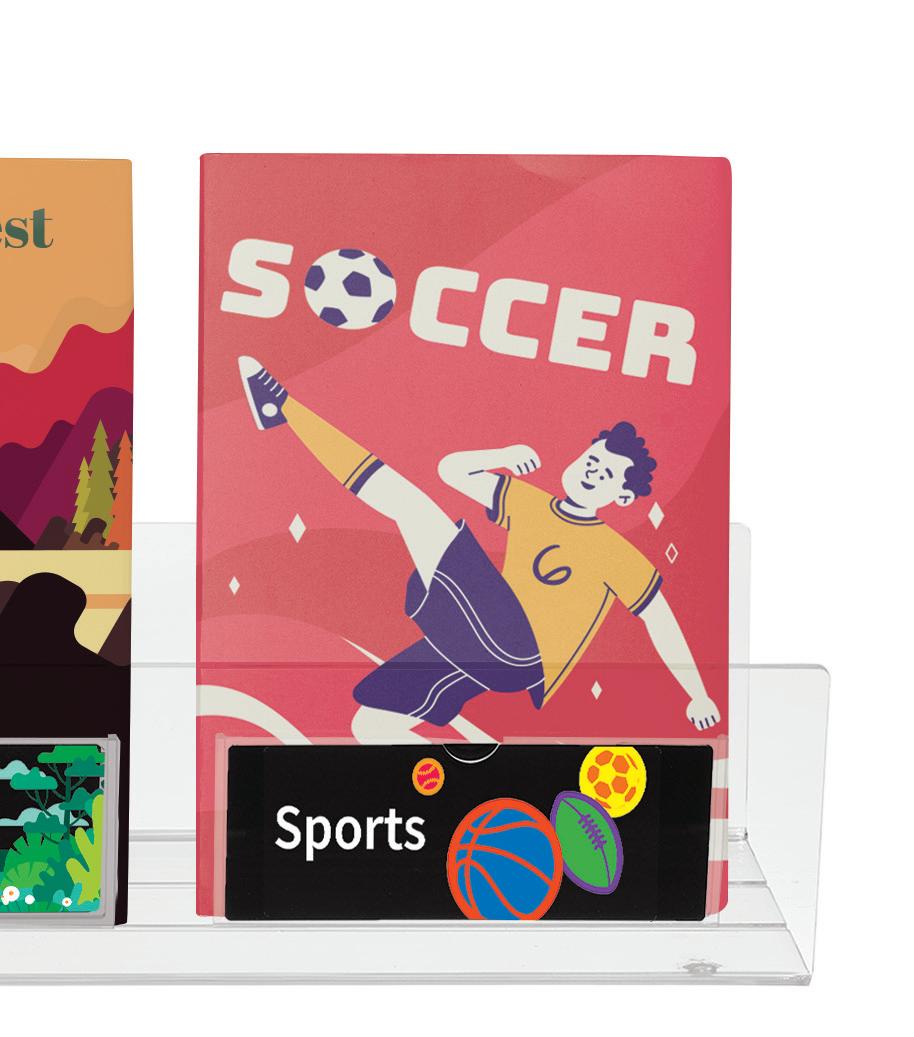













The total package.
Attention-grabbing signage and face-out displays are just the beginning. Explore the whole collection (plus coordinating rugs!) at demco.com.

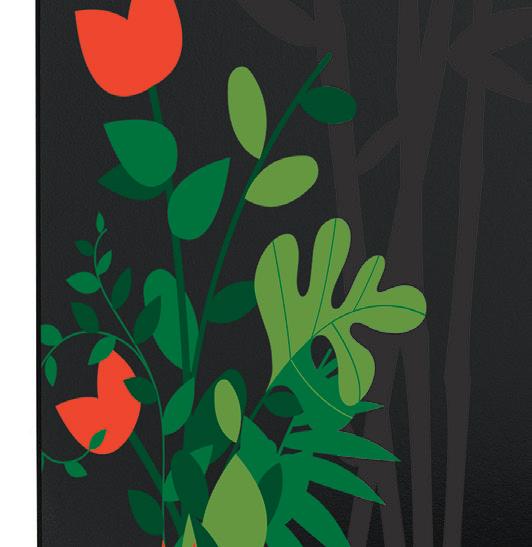


Scan to shop























































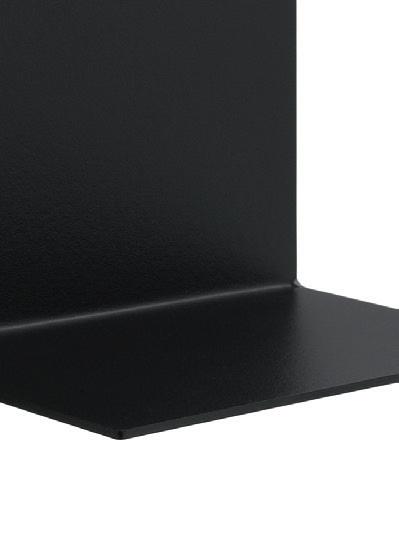








ShelfSpark

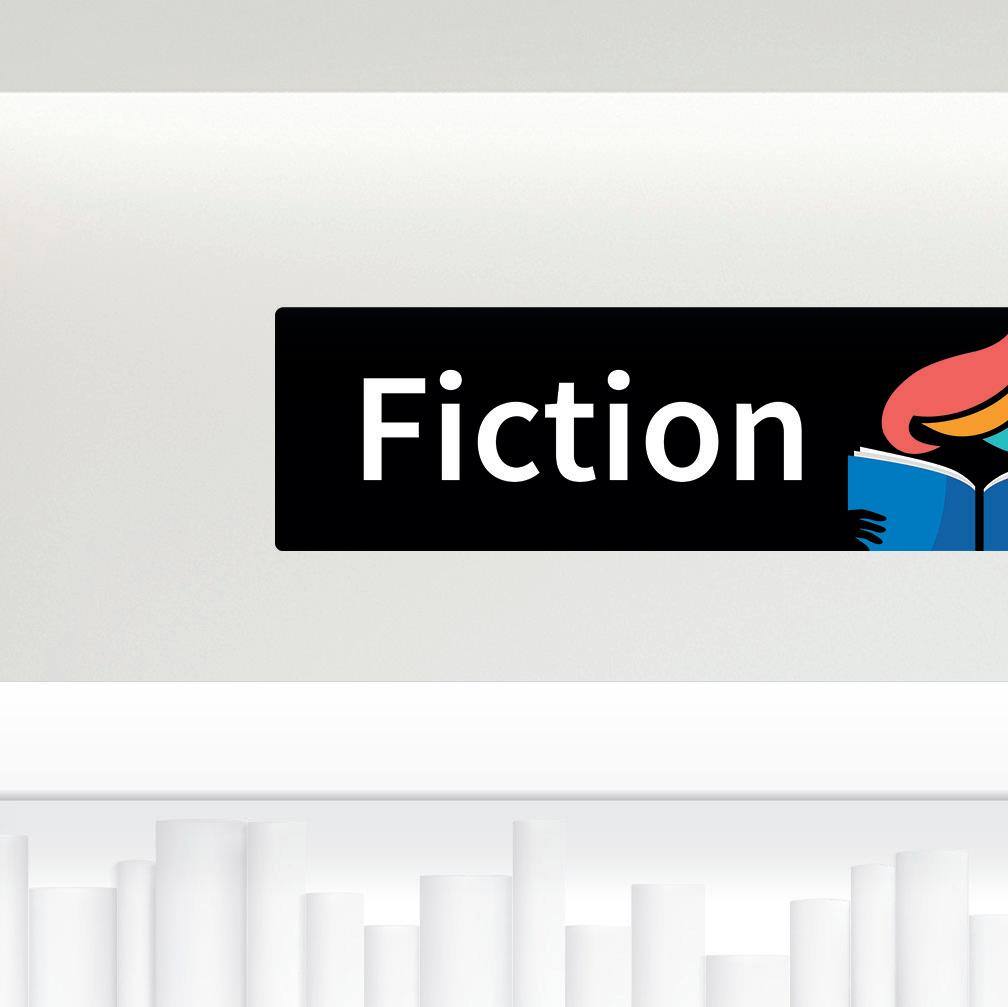
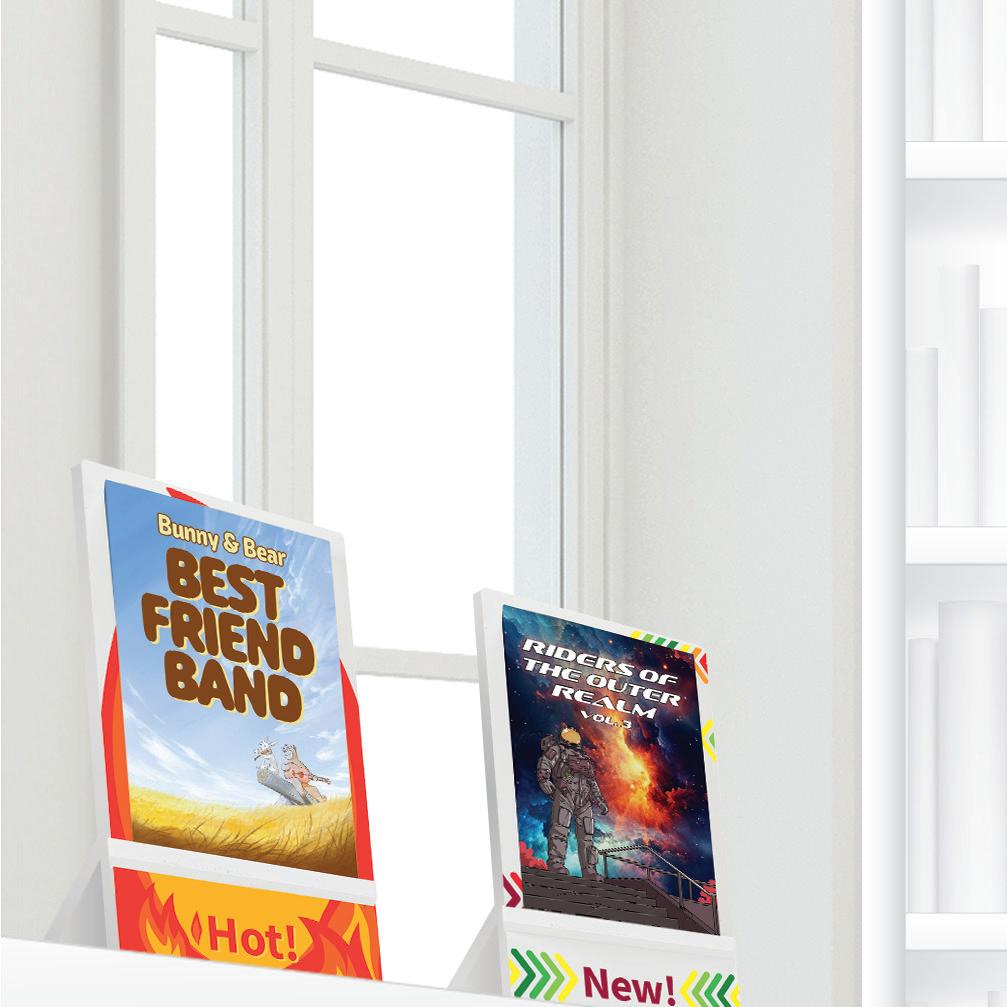





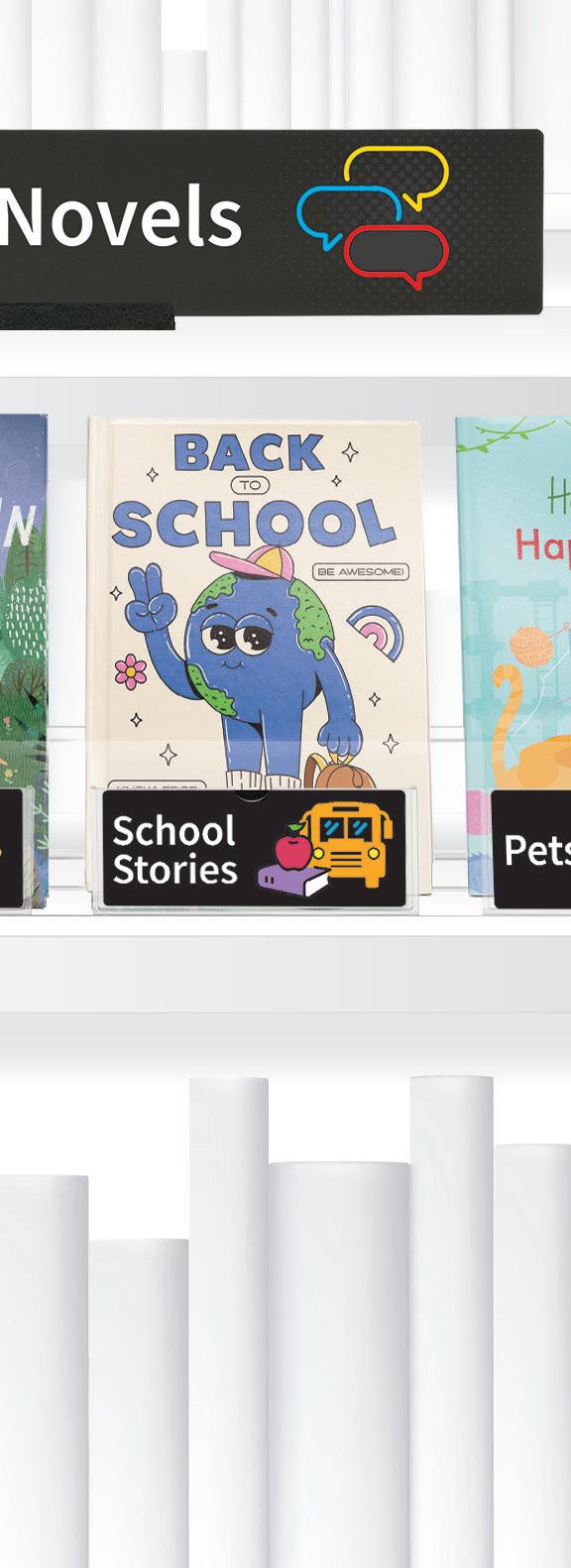
Made for each other and your library Merchandising Solutions Scan to shop ShelfSpark
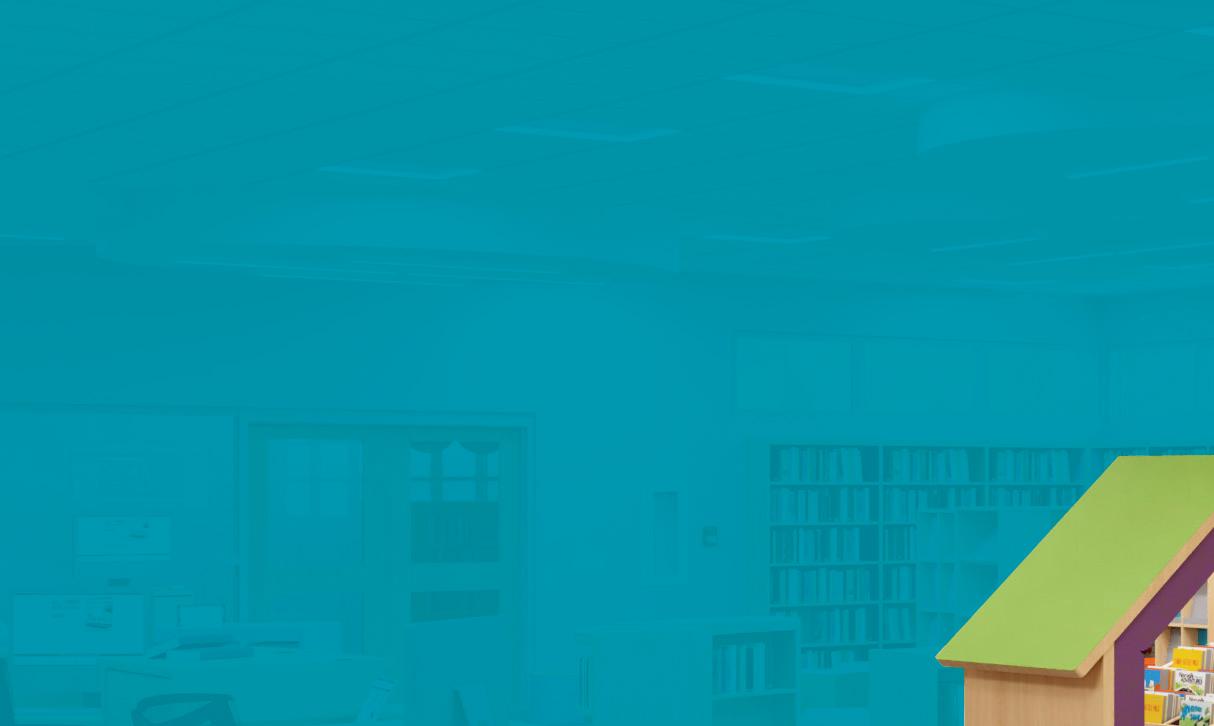












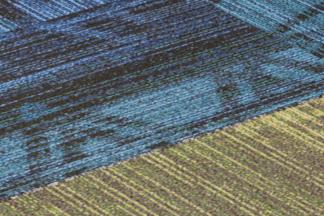
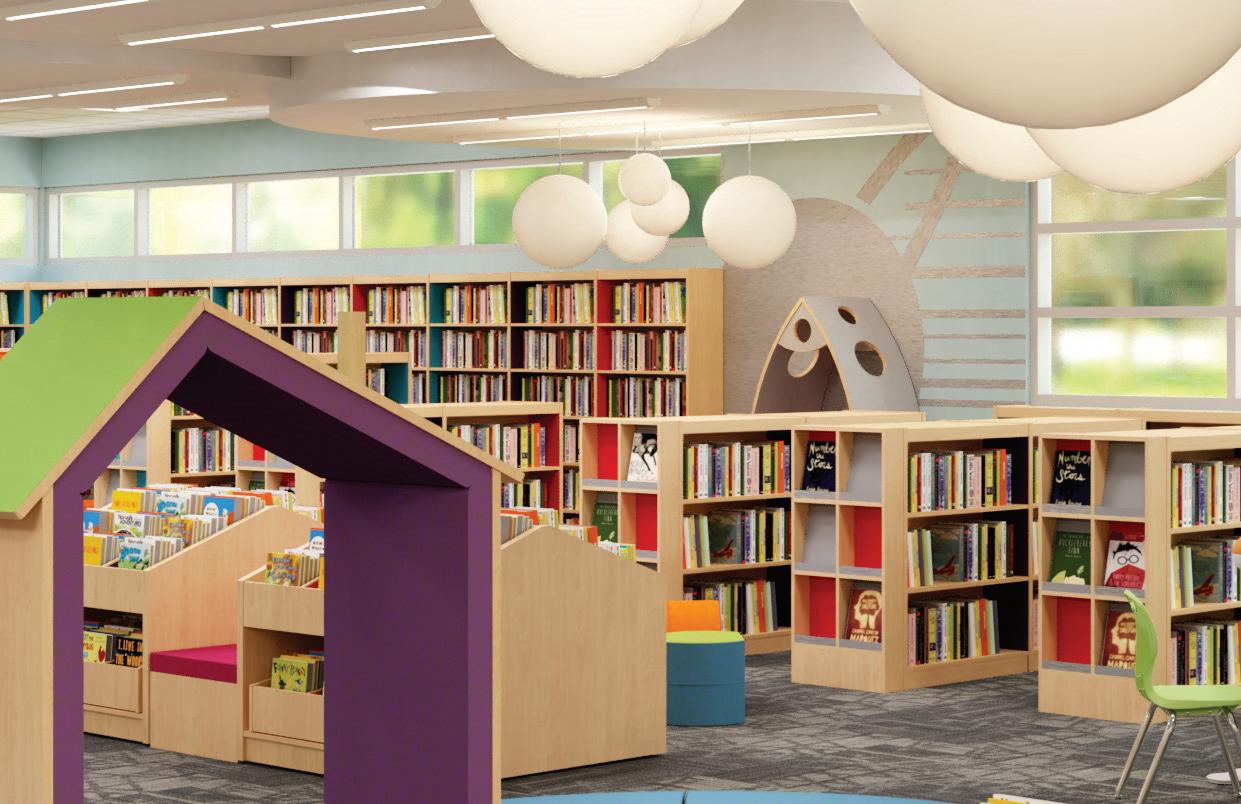



CONTRIBUTORS

Dr. Robert Dillon
Author, Speaker, Educator, Lifelong Learner
With 20+ years in education, Bob has served as a teacher, principal, technology director, and innovation leader. Working through an equity lens, he looks to bring excellence to every classroom.

Kate Larson
Writer, Researcher
Kate has a background in non-profit communications and is particularly interested in the ways that language drives behavior changes through education, awarenessbuilding, and the power of an irresistible narrative.
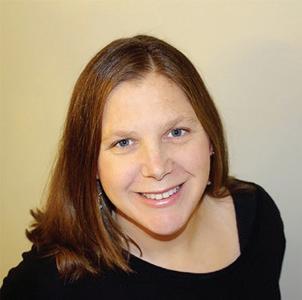
Amanda Struckmeyer
Library Media Specialist
Amanda is an author, librarian, and educator who’s served on both the Caldecott and Newbery Award committees. She brings stories and information literacy to life through hands-on experience.

Diana Rendina
Library Media Specialist, Speaker, Writer
In addition to working as a media specialist, Diana is the creator of a learning and makerspace blog, has authored and co-authored several books, and is an international speaker on the maker movement.
DEMCO ARRAY 866.938.6886 2
14
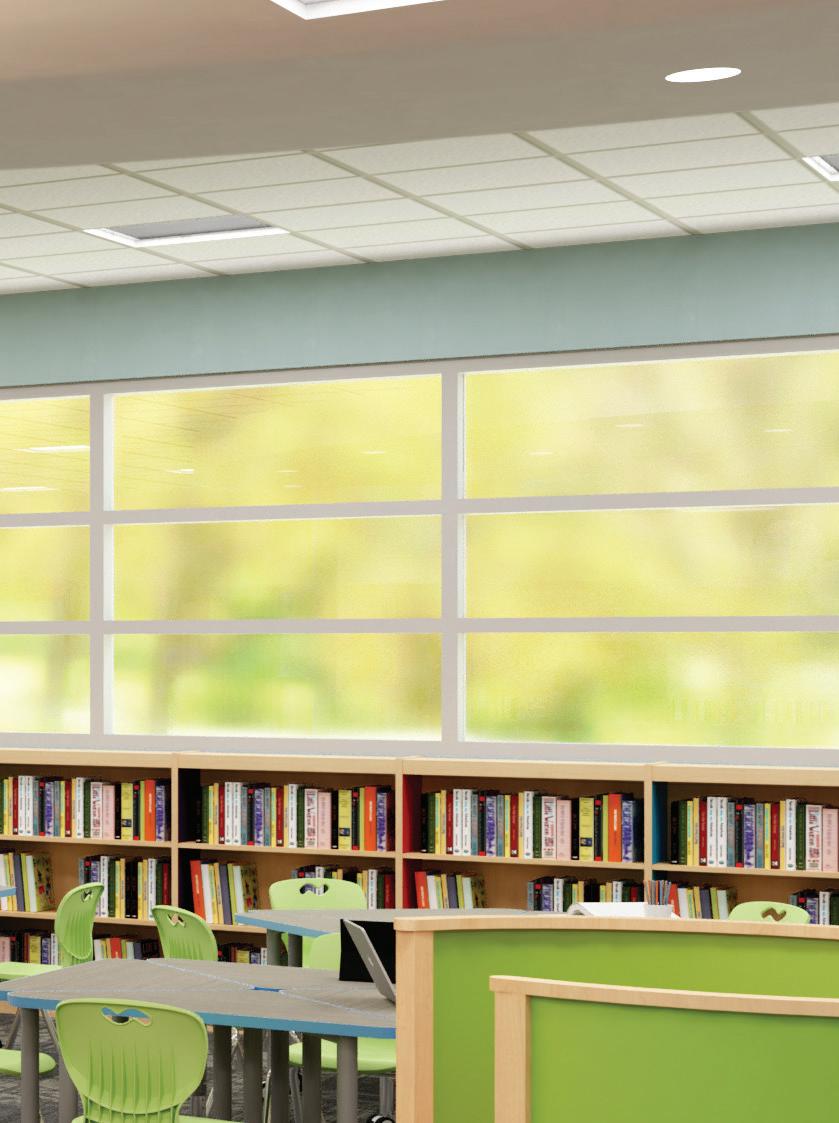
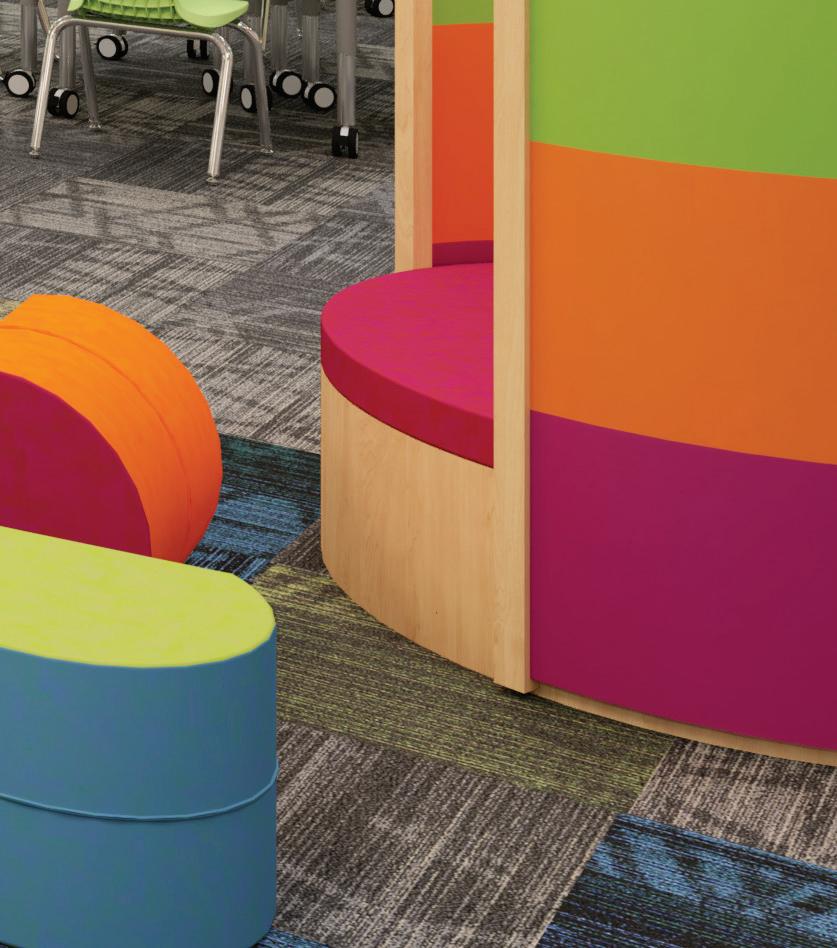


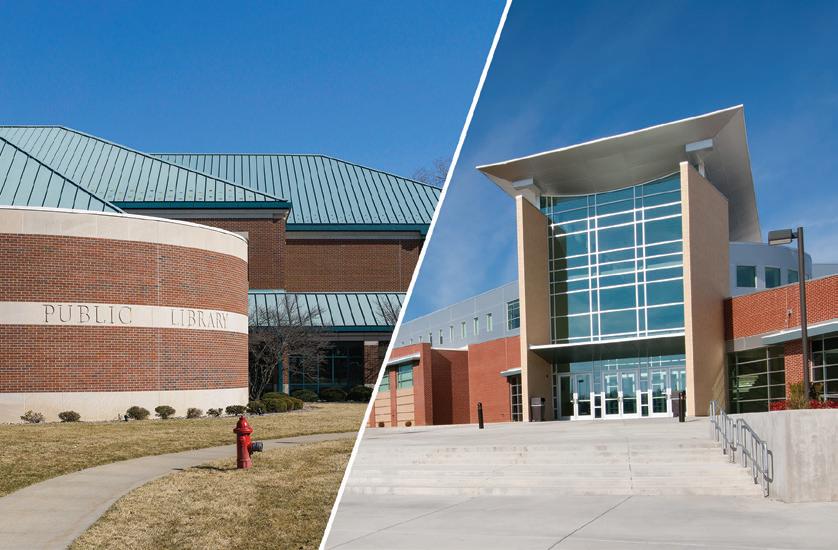

2024 ISSUE 3 DEMCO.COM 3 CONTRIBUTORS Marketing the Library Online and In-Person Strategies to raise awareness and boost engagement in your resources and services BOOKMARKS UNCOVER NEW PROGRAMMING IDEAS MEET OUR PRODIGIOUS PARTNERS THE BOOK DOCTOR MAKES BOOK CARE EASY EXPLAINING COLLECTION MAINTENANCE UNEXPECTED WAYS TO ZIG-ZAG 4 WAYS TO OPTIMIZE YOUR MAKERSPACE 8 10 12 20 22 32 4 Make the School Library a Beacon, Not a Burden Ways to make the school library a space that students eagerly embrace The ABCs of ShelfSparking Library Shelves See how one elementary school librarian remerchandised her collection 24 30 Collaboration Between Public and School Libraries Five easy steps to developing meaningful partnerships 28
theMarketing Library
ONLINE AND IN-PERSON
By Kate Larson and Amanda Struckmeyer
DEMCO ARRAY 866.938.6886 4
NO MATTER THE SIZE OR LOCATION OF YOUR LIBRARY,
you’re likely to face a similar challenge: helping your community understand (and get excited about!) all of the resources and services available at the library. Here are two major strategies to raise awareness and boost engagement.
FOR PUBLIC LIBRARIES: MASTER SOCIAL MEDIA
While it’s easy to push social media down your already-full to-do list, learning to do it right can result in a major boost in visibility. “Social media reaches a different population than our more traditional modes of communicating,” says library director Bailey Anderson of Wisconsin’s Black Earth Public Library. Your patrons are spending time online, and understanding how to reach them there can extend your reach significantly.
Choose your platform(s)
“Try to evaluate as clearly as you can who your planned audience is,” says Liz Boyd, a marketing specialist at Madison Public Library in Madison, Wisconsin. “If there’s an audience segment that you really want to reach,” she says, choose your platform accordingly — because it’s not realistic to post constantly on every platform. Do consider that “video content is the hardest to create because it’s more time-consuming,” Boyd says, and Gen Z prefers video-heavy platforms that often require multiple posts per day to gain momentum.
SOCIAL MEDIA AT A GLANCE
Audience Platform
Over 40 Facebook
25–40 Instagram
Under 25 TikTok or Reels (Instagram video)
Authors and X (formerly Twitter) Journalists or Threads
Do we want to be funny? Do we want to be authoritative? Do we want to be informative?
Define your voice
“There are great opportunities on social to show a bit more of our personalities,” Boyd says. Social media can be a great place to be more casual or even downright silly. Depending on your library’s vision and mission, she says, you can “decide on things like: What should our tone be when we’re approaching social media? Do we want to be funny? Do we want to be authoritative? Do we want to be informative?”
Plan your content
Think beyond upcoming events and announcements. Consider highlighting services patrons might not know about, book recommendations, and day-in-the-life stories. “You shouldn’t always be making an ask with your social,” Anderson notes. Instead, she recommends sharing some just-for-fun content: “[Memes and stories] are really engaging and will make people stick around.”
Consider your bandwidth and tools
Social media strategy will look very different depending on the size and location of your library. At Black Earth Public Library, the smallest library in its county by square footage, Anderson wears a lot of hats and there isn’t much extra time. She relies on the Meta Business Suite to preschedule posts (usually 3x per week) during quick breaks in her day. She uses Canva, a free graphic design tool, to create simple graphics that she can use in both print and social media. Every Friday, she’ll post a particularly intriguing first line of a book with the hashtag #firstlinefriday.
Continued on next page >>
2024 ISSUE 3 DEMCO.COM 5
By contrast, Madison Public Library has nine branches and a three-person communications staff. There, Boyd schedules social media posts on a central calendar, sometimes months in advance, and works to ensure that the subjects span a variety of topics. “We have hundreds of events every month,” she notes. “It became clear to me immediately that we needed to have different content categories to diversify.” She plans out daily posts by focusing on analytics and adjusts monthly. Library staff can also make requests. “We try to tie in our social media strategy to our overall marketing strategy,” she says, which means coordinating with the website and email newsletters.
Keep learning
There are many resources available, Anderson says, including free webinars, the Facebook Help Center, and even Google (“Usually, there’s about fifty people that have the same question!” she notes). Consider inviting a local influencer to do programming at your library about social media — and take notes. And don’t be afraid to mess around with each platform’s tools, she says: “You won’t break it!” Boyd suggests new users “look around at what other libraries are doing; look around at what other people in your specific location or community are doing and see what’s going well … you don’t have to reinvent the wheel.”

FOR SCHOOL LIBRARIES: BUILD A NETWORK OF ADVOCATES
In school libraries, your colleagues can be your biggest advocates. Empower teachers, paraeducators, administrators, specialists, and more to be better library users by keeping the lines of communication open. Go beyond providing basic information to new staff members; the library is a fluid space that shifts with current trends, so make sure your community is up to date with regular touch points.
How do you best let staff know what you’ve got to offer? That depends on your school, your staff, and your resources. Choose a method that works for you.
Be a tour guide
Offer library tours to staff during a back-toschool or in-service day or add a monthly dropin tour to the calendar (like the first Tuesday of every month). Point out the most popular areas of the library as well as overlooked resources. Offer information on how to request books, how to reserve the library, and borrowing guidelines. Ask for input on upcoming displays that could support their curriculum.
If you like, end with a scavenger hunt! Place an item that will be obviously out of place (like a shoe or a potato masher) in each section of the library. Provide each colleague with a clipboard, a pencil, and a list of areas to check for hidden items.
Be a columnist
If your principal sends out a regular newsletter, ask to contribute a short piece each week or month. Highlight a few new books, fresh displays, areas of interest, or a couple of services. Keep it “quick and helpful,” avoiding library jargon and “information overload.”
Be a maitre d’
Create a menu of services to promote your offerings. Distribute print copies to all staff and follow it up with an email version (papers are so easily misplaced). Print a few on large paper and post them in the staff workroom or lounge. Give your menu an exciting design and remember to include the “specials.”
DEMCO ARRAY 866.938.6886 6
Be a game show host
Secure a standing item on the agenda for staff meetings or in-service days. Maximize your allotted time by giving a fun and interactive presentation that borrows from well-known game shows like Jeopardy, Family Feud, Wheel of Fortune, or The Price is Right. Pack in as much information as you can about new books with curricular tie-ins, new or underutilized services, tech tips, or monthly display themes.
Be at the meeting
Attend team meetings, PLCs, or department collaboration sessions as often as your schedule allows. Come prepared with items to share, be ready to answer questions, and ask them! Find out about curriculum updates, upcoming units, and material needs to learn how your library services can tie in. Look for opportunities to collaborate and enhance upcoming units and lessons.
Meetings are excellent opportunities to talk with colleagues and gauge which services they’re embracing, which are getting less attention, and why. Staff may not have enough information about a particular service, or they may be familiar enough with it to recognize that it’s not a good fit for them. This will guide you as you decide where to spend your time, energy, and money.
To learn more about social media, library marketing, and beyond, visit ideas.demco.com
2024 ISSUE 3 DEMCO.COM 7
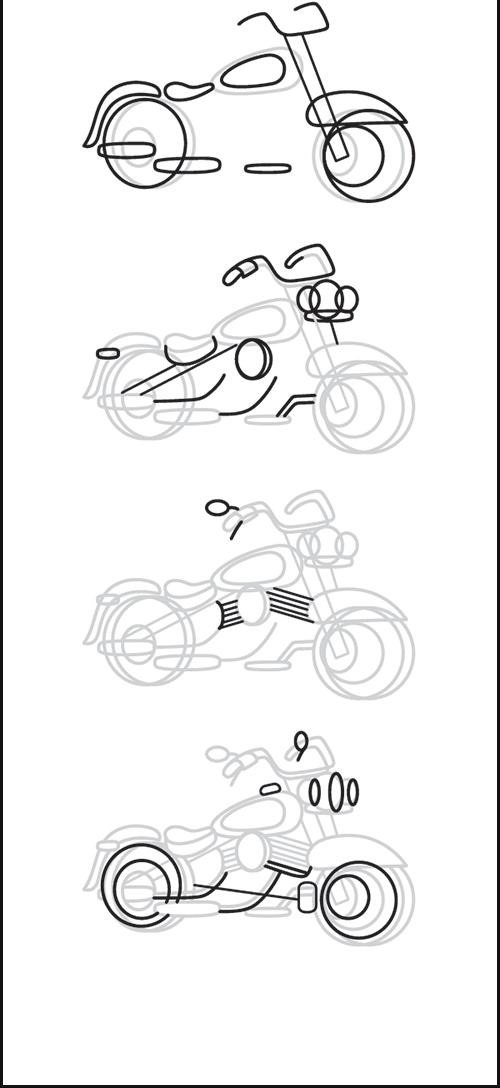

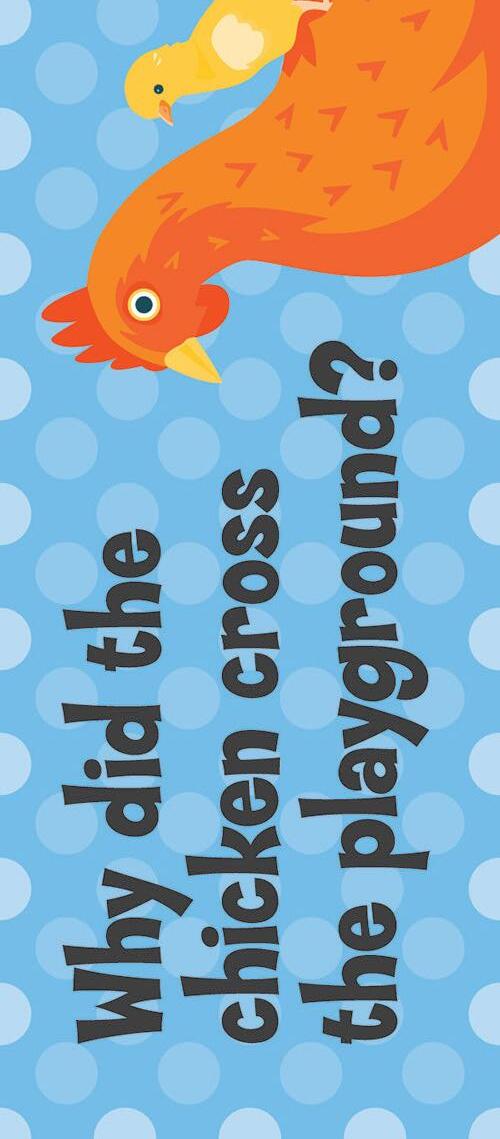



The Bookmark Boost:
An Easy Way to Uncover New Programming Ideas
At first glance, bookmarks fill a humble void: saving a reader’s place. But these seemingly simple slips of paper have great potential as springboards for exploration. Try combining bookmarks with thematic books, lesson content, and activities!
Endangered Animals Bookmarks feature six different species, including facts and ways to help. Use these bookmarks to introduce books and online resources about endangered animals. Challenge students to create bookmarks of their own based on the facts they find!
League of Extraordinary Women Bookmarks feature brief biographies of remarkable women like Anne Frank, Winona LaDuke, and Malala Yousafzai. Pull these out to inspire biography projects or to help students understand how to select and summarize important facts.

Kindness Bookmarks are perfect for building a culture of caring! Pair them with books such as Be Kind by Pat Zietlow Miller and The Power of One: Every Act of Kindness Counts by Trudy Ludwig. Use the text on the bookmarks to spark discussions and share ideas.
Jokes Bookmarks and Silly Stories Bookmarks (see right) are sure to be favorites! When students ask for more jokes, challenge them to find the joke books in your library. Invite students to share their favorite jokes using Flipgrid or another collaborative media tool.
Simple Science Bookmarks are perfect for makers and creators! Coordinate this how-to set with a book talk on DIY resources in your collection, or host a literacy event where families can use the bookmarks to make bath bombs, snow globes, a fizzy rainbow, or ice cream.
teacher to complement one
Master the Art of Reading Bookmarks highlight widely recognized works by well-known artists. Challenge students to identify the artist of each art piece using nonfiction resources. Partner with your school’s art teacher to complement one another’s content!







Looking for more great ideas? Browse dozens of themes and styles at demco.com by Kate McMullan and Jim McMullan).

Crafty Bookmarks like the How to Draw, Origami Activity, and Color Craze sets can inspire a variety of read-alouds. Choose an artsy book like Mixed: A Colorful Story by Arree Chung, or pair themed bookmarks and stories (like How to Draw Vehicles Bookmarks and I’m Fast! by Kate McMullan and Jim McMullan).








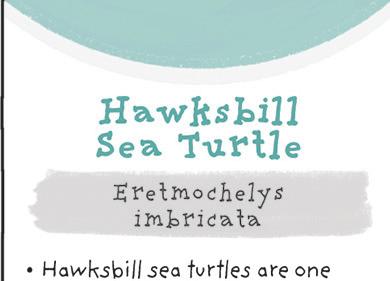











DEMCO ARRAY 866.938.6886
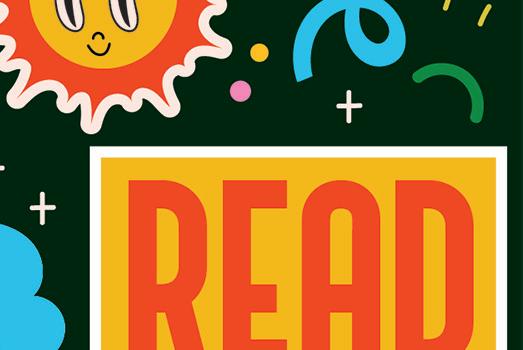
















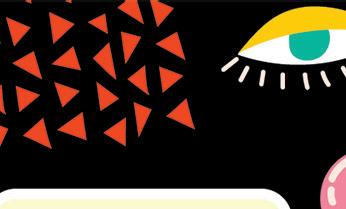



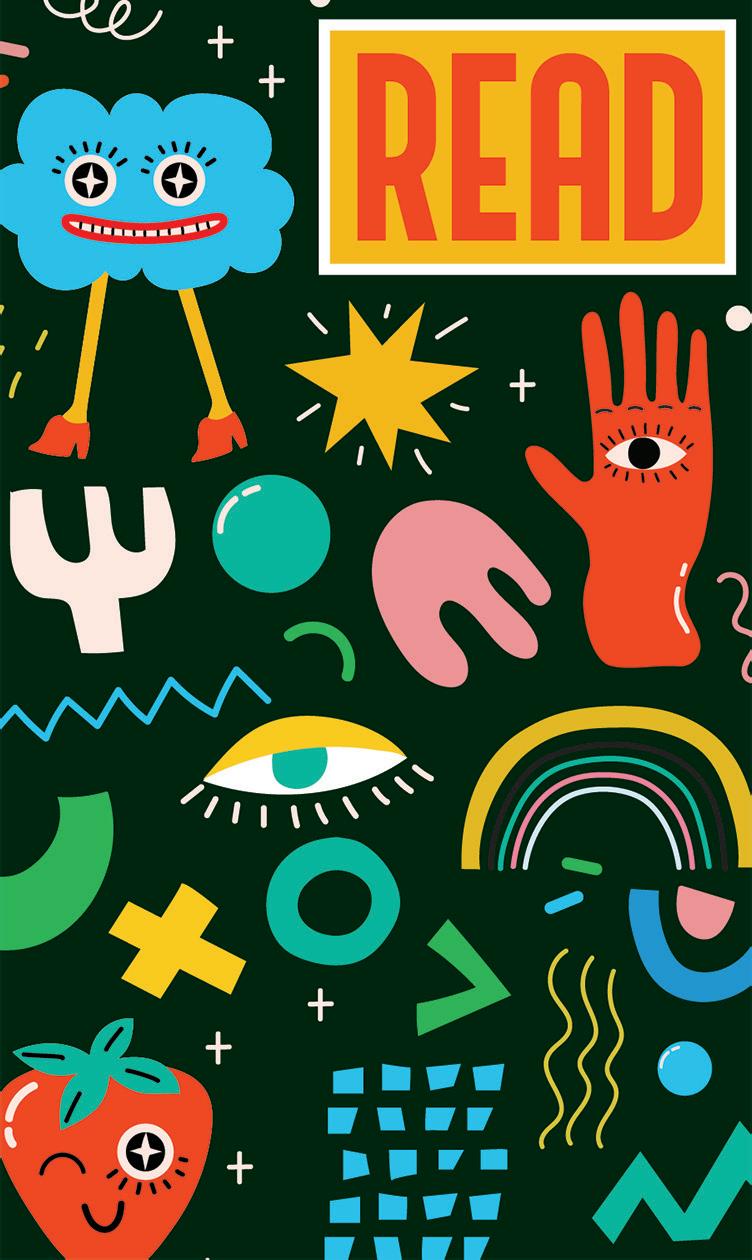










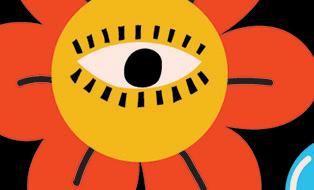

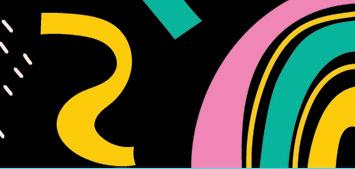


Draw a blank they’ll remember buy kid great "This is hilarious"
When you (Verb) Silly Stories Bookmarks from Upstart®, every (Noun) will have a (Adjective) time as they shout, ! (Exclamation Phrase)


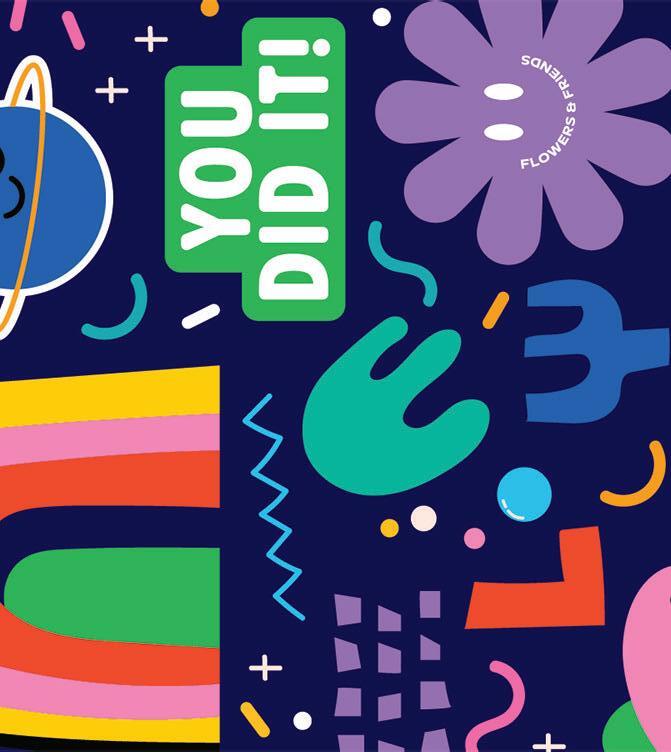





2024 ISSUE 3 9
Scan to shop Demco Silly Stories Bookmarks
Meet Our Prodigious Partners
THEY’RE LEARNING HEROES IN OUR BOOK!
At Demco, we strive to delight our customers with high-quality products and services that spark curiosity and ignite learning. That means working to gain a deeper understanding of your challenges, obstacles, and aspirations. To do so, we partner with educational leaders like Dr. Robert Dillon, a former educator, to provide hands-on guidance. We also work with a community council consisting of librarians from across the country. It’s an opportunity for them to represent their peers, share their experiences, and highlight what matters most to them. And it’s an opportunity for us to do what we love: learn how we can better support your libraries and local communities.
DEMCO’S LEARNING SPACE EXPERT AND EDUCATOR

Students thrive when the learning environment reflects the ways they’re growing and changing.
DR. ROBERT DILLON
Author, Speaker, Educator, Lifelong Learner
Dr. Dillon spent decades serving as a teacher, principal, technology director, and innovation leader. Today, he spends a lot of time focusing on how learning spaces — including classrooms, libraries, and common spaces — feel to students and educators who spend their days in them, and how a well-designed space can support and spark learning opportunities.
He often speaks at local, regional, and national conferences. He is also the cofounder of ConnectED Learning, a St. Louis non-profit dedicated to providing a ordable, quality professional development for teachers. For his work, Dr. Dillon has been honored by Common Sense Media, the Center for Green Schools, the d.School at Stanford University, the Buck Institute for Education, and Future Ready Schools. He is also the author of five books on intentional design in learning.
drrobertdillon.com
DEMCO’S CUSTOMER COUNCIL MEMBERS

CAROLINE CARR Librarian
@drrobertdillon, X
A firm believer that the library should be a warm, welcoming environment where kids know they are always wanted, Caroline is in her 17th year as a librarian at Parkwood Hill Intermediate School in Fort Worth, Texas. She’s also an adjunct professor of library science at the University of North Texas.
@thetexaslibrarian,
I can have a lasting impact on the kids I teach and want to make sure it’s a positive one!
DEMCO ARRAY 866.938.6886
Inspire, innovate
TikTok 10



AMY DRAKE Teacher Librarian
A lifelong learner, Amy holds a Master's Degree in TESOL and a K–12 Administration Degree. Prior to becoming an ALA-accredited teacher librarian with an MLS, she was a classroom teacher at the secondary level for 16 years, teaching English Language Arts. Today, Amy is a teacher librarian in Mitchellville, Iowa.
@the_snarky_librarian, TikTok
HEATHER GRACE Librarian and Content Creator
Now in her fifth year as a librarian in Texas Hill Country, Heather has a contagious enthusiasm for all things related to learning and the library. She recently received the 2023 Shining Stars Award of Excellence from her district’s public school foundation.
@thecontouredlibrarian, TikTok
MATT KING Librarian
A former classroom teacher, Matt is currently a school librarian in St. Charles, Missouri. He believes in the importance of school librarian and teacher relationships and has written about it in School Library Research (SLR), Knowledge Quest, and School Library Connection. Matt was also named to the 2019 Class of Emerging Leaders by the American Library Association (ALA).
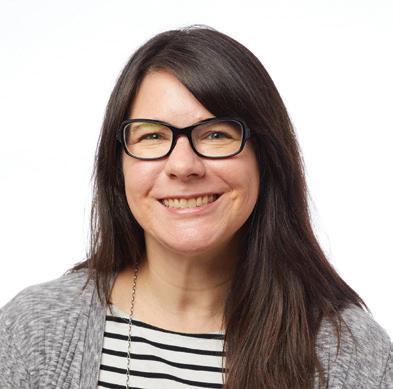
Sparking the love of reading is a bonus of my job.
I love fostering a love of learning and reading in the next generation.
Becoming a school librarian is the best decision I’ve ever made. I love being a school librarian.
DIANA RENDINA
Library Media Specialist, Speaker, Writer
Diana is the media specialist at Tampa Preparatory School, a 6–12 independent school in Tampa, Florida. In addition, Diana is the creator of the blog Renovated Learning. Diana has won several awards over the years, including the 2016 ISTE Outstanding Young Educator Award, the 2015 AASL Frances Henne Award, and the 2015 SLJ Build Something Bold Award. Diana has also authored and coauthored several books and is an international speaker on the maker movement.
@Kingoflibrary, X renovatedlearning.com
I’m passionate about libraries being places for students to discover, learn, grow, create, connect, and collaborate.
2024 ISSUE 3 DEMCO.COM
11
The Book Doctor Makes Book Care Easy
WITH HOW-TO RESOURCES AND RECOMMENDED SUPPLIES, THE BOOK DOCTOR CAN HELP YOU KEEP YOUR BOOKS HEALTHY AND YOUR PATRONS HAPPY.

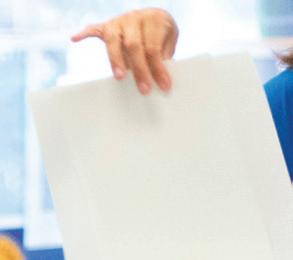

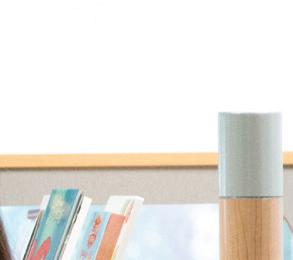

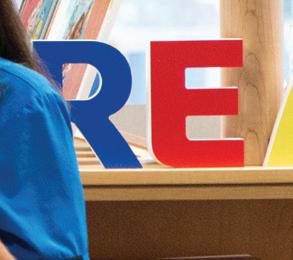


MEET YOUR BOOK CARE SPECIALIST KIMBERLY YOUNG
Whether fixing tattered covers and ripped pages, or protecting new books from wear and tear, helping you keep your collection in tip-top shape is Kimberly’s mission. She has a Masters in Library and Information Sciences and decades of experience working in a wide variety of library settings across regionally, socially, and culturally diverse areas of the U.S. Her work focuses on collection development, material processing, and book care. She’s passionate about book care, and as the Book Doctor, Kimberly is dedicated to supporting library professionals.
866.938.6886
Nobond

BOOK DOCTOR
HOW TO REPAIR PAGES (WITHOUT USING DESK TAPE)
For a more lasting fix, try the glue method. Demco Norbond® Liquid Plastic Adhesive Glue is perfect for a wide variety of repairs. And a Book Repair Mending Stick is great for applying the adhesive. For a quick fix, try the tape method. Filmoplast® P Paper Book Mending Tape works wonders.

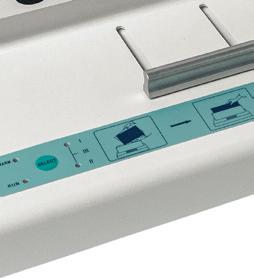


TIPS, TRICKS, FIXES, AND FAVORITES



HOW TO FIX BOOKS WITH LOOSE TEXT BLOCKS
Here's a quick, cost-e ective go-to for that: the Demco Cover One Book Repair Machine. In about 10 minutes, and for only 25 cents per title, your books can be even better than new.

HOW TO REINFORCE SPINES AND CORNERS
A couple Book Doctor favorites include Demco Reddi Corners and Repair Wings. Both products are quick and easy to use, and they’re available in clear or cloth to protect a range of books.
Scan to shop book repair



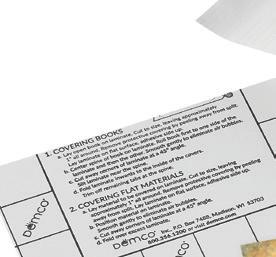







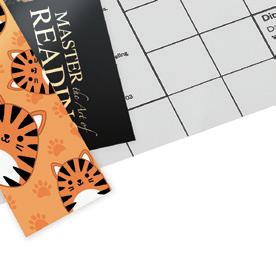

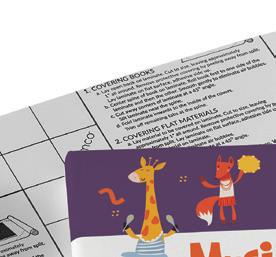
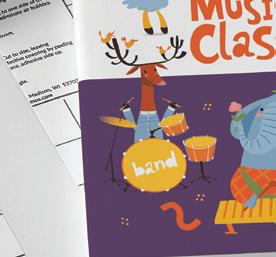


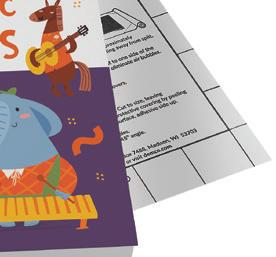


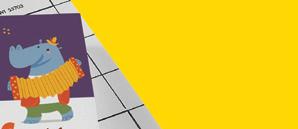

WHAT TO DO WITH EXCESS LAMINATE AFTER COVERING BOOKS
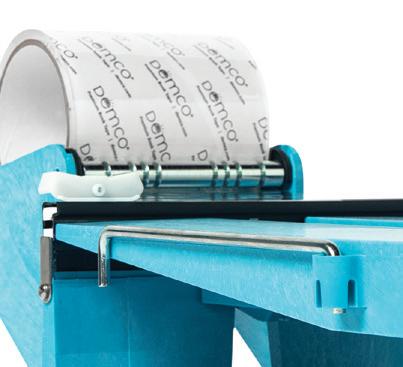


Not only is Demco CircExtender3X® Laminate strong and easy to use on books, it’s also great for covering bookmarks!

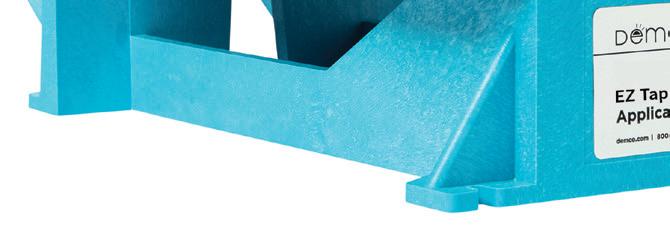
HOW TO USE A TAPE APPLICATOR MACHINE




The Demco EZ Tape Applicator is a handy device that holds and cuts tape for spine application without the need to measure. For step-by-step instructions, check out the video from Demco’s book repair series. You’ll be a pro in no time!
Scan to watch video
Scan to shop book protection
2024 ISSUE 3 DEMCO.COM 13






in the Ge ing














CHOOSING AND MANAGING FUNCTIONAL AREAS WITHIN YOUR LIBRARY






 By Amanda Struckmeyer and Demco
By Amanda Struckmeyer and Demco


Libraries are multifunctional havens, offering a diverse array of books, technology, study spaces, community events, educational programs, and resources for preserving local history. All of this is woven together to enrich our lives and foster a love of learning. Creating dedicated zones for each of these functions (and more!) has a wide variety of benefits, too. Designating specific areas within the library creates a collaborative flow and helps everyone to understand expectations. Defined boundaries can make noise management and resource allocation easier. Plus, labeling the zones can help visitors and stakeholders learn about the many functions of the space, which is a great way to passively promote specialized services.












DEMCO ARRAY 14







Choosing zones










Consider including the following zones in your library.








Depending on your space, staffing, resources and partnerships, and users’ needs, the number and types of zones in your library will vary. Choose the ones that best serve your learning community! Keep in mind that one space can transition from one function to another throughout the day or from one day to the next; for example, a Meeting Zone might transition to a Makerspace Zone once specific tools come out.











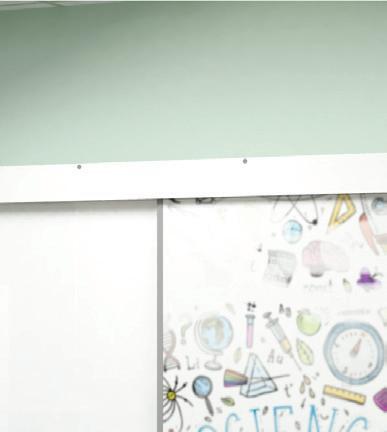














MAKERSPACE ZONE
This is where visitors can find well-organized materials for specific projects and free building. Having both STEAM-specific tables and ample floor space is ideal, as certain materials and oversized projects work better on the floor. Choose tables with a lip around the edge to keep small and moving pieces from falling; try the Demco FLEXplore Gear Guard™ Makerspace STEM Table. If you’re working in a multipurpose zone, carts of supplies can keep the space neat and functional.








































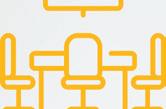


















MEETING ZONE


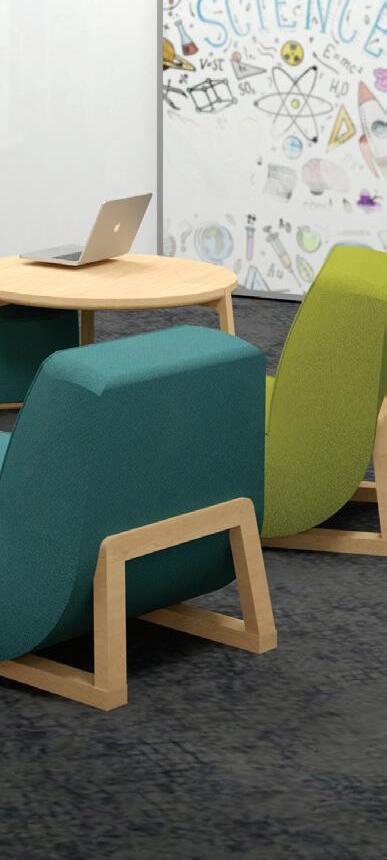
A Meeting Zone is the perfect spot for community organizations, library committees, and other groups to comfortably assemble. Select flexible furniture for easy changes in group size or breakout discussions. Situate this zone near a dry-erase board or choose a mobile model. Provide power stations to keep devices charged, privacy screens and sound dampening to minimize disruptions, and storage for shared resources and materials.


GROUP LEARNING ZONE
The Meeting Zone can be easily repurposed into a designated space for collaborative study and teamwork. Using the same flexible furniture, whiteboards, and technology, libraries can support small and large group activities and interactive learning experiences. This is where drop-in classes, community programming, and other groups can congregate comfortably.









Continued on next page >>
































DEMCO .COM












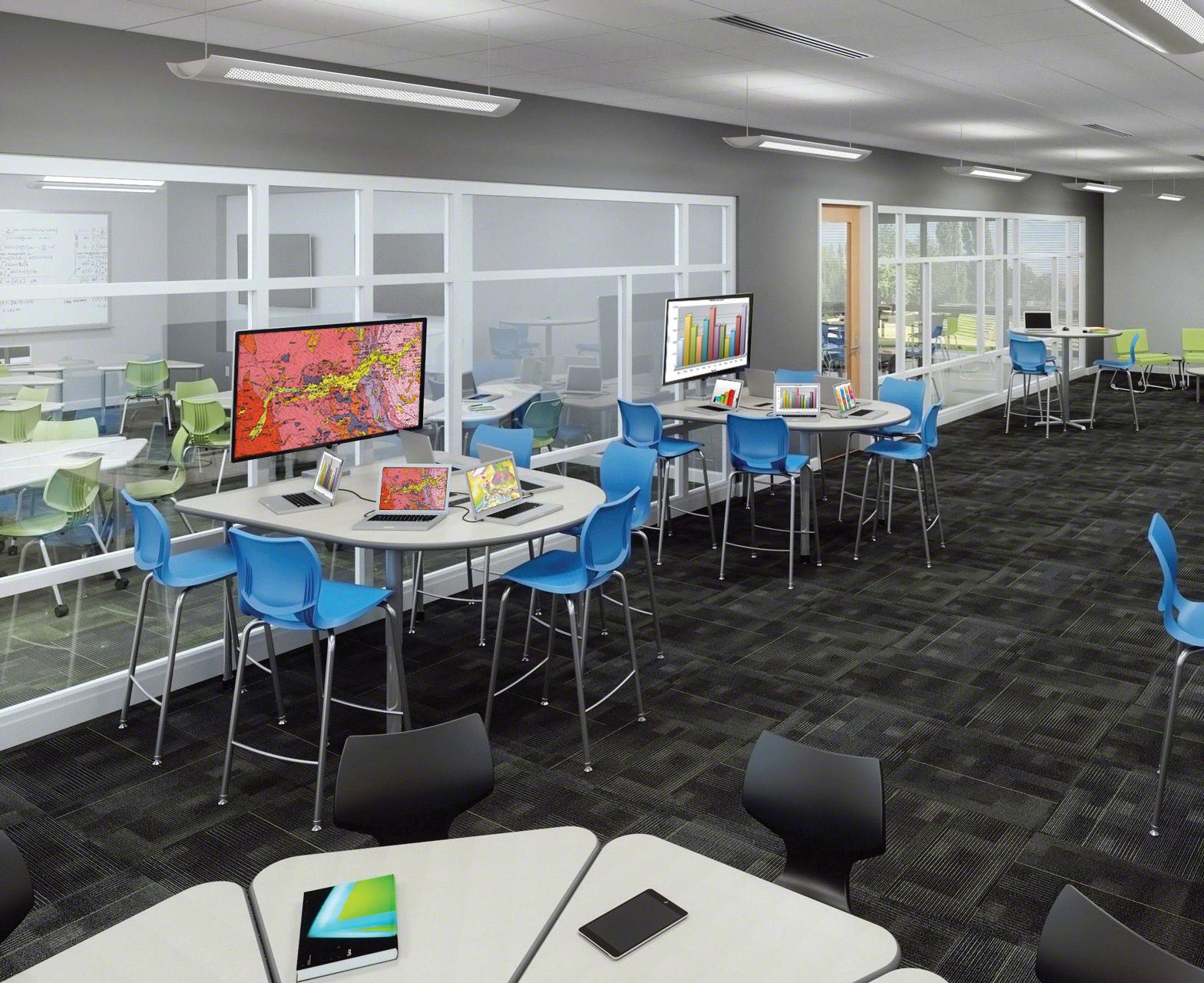




























TECH ZONE
Make it clear that this is where visitors can find tablets, laptops, and other technology. Load up a shortcut to the library website as well as learning apps and links. Provide ample power sources like the DemcoPower Pop (tabletop or tower) to keep everything up and running.







QUIET READING ZONE


GROW ZONE
Consider adding a biophilic oasis that celebrates seed libraries or hydroponics. This gives everyone a chance to reap the many benefits of bringing the outdoors in, such as improved cognitive development, better concentration, higher self-reported engagement and enjoyment of learning, lower stress and anxiety, a stronger sense of well-being, and more.
A classic area in the library, this zone is designed to accommodate independent readers and browsers with comfortable seating and inviting nooks. Clearly define the area so that visitors know when they’re stepping into the quiet space; use Demco Free-Standing Room Dividers or sound-dampening acoustic panels. Provide adequate lighting, incorporate art and decor, choose comfortable flooring, and post a “quiet zone” policy. Consider promoting a tech-free or reduced technology environment to encourage reading without distractions.
















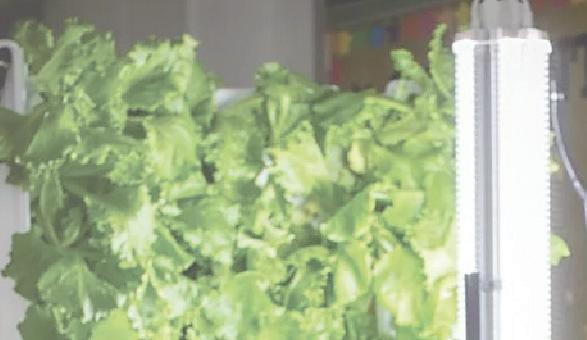



Managing zones
Be sure to include:
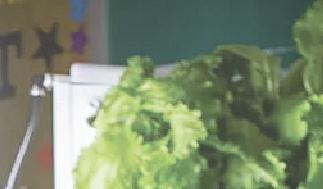
Clearly label each zone with eye-catching signage. Hang these in visible areas to assist patrons of all ages as they navigate the library. Invest time in teaching visitors and staff members about the library’s different zones. Explain what happens in each one and clearly communicate expectations. Posters or signs can be helpful for this. Create a brief, illustrated, easy-to-read informational poster for each zone.


• Noise level expectations





• Furniture set-ups that show if you’d like tables and chairs returned to a specific arrangement (floor dots can help with this)
• Specific tools and supplies available in the zone and where they can be found

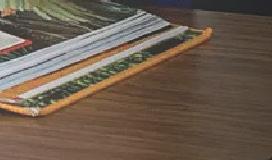


For shared zones, create an online calendar. Having a calendar will allow you to easily block off the times when each zone is in use, and it will make sign-up a breeze for others.
If you’re managing a small library space, don’t worry! Zones can be flexible and change with the needs of your students and staff. With the right organizational tools (like the Demco Show & Stow System) and with easy-to-move partitions, zones can quickly transform from one function to another.






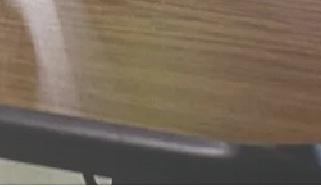



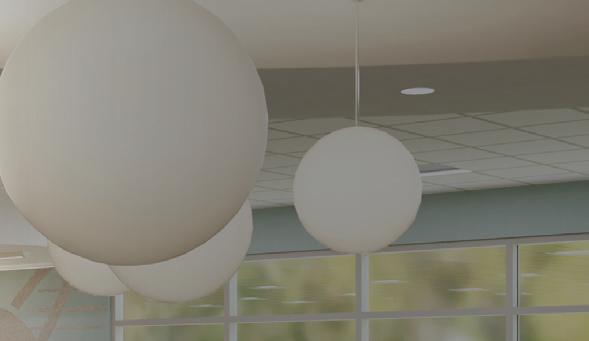
Have some fun with zones

Zones are helpful for a wide range of library users. Visitors and staff alike will be relieved to have specific areas available for their activities, which can boost engagement and minimize distractions between groups. As you teach your learning community about zones, be sure to remind them to “zone out with a good book!”







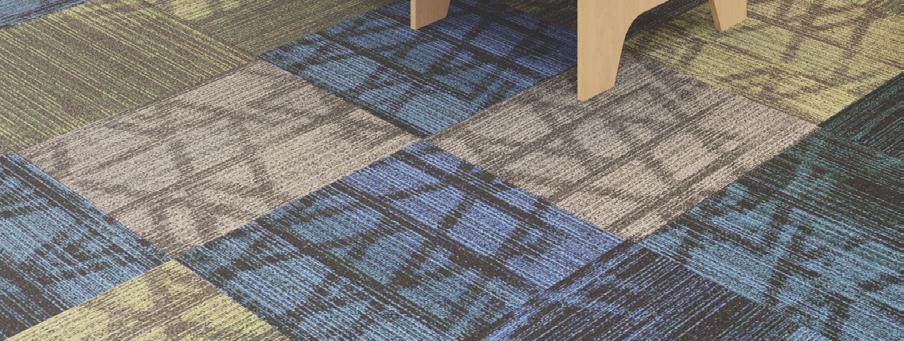







2024 ISSUE 3 17
Make room for better learning
The Show & Stow System is a highly flexible storage solution that combines organization and collaboration to take your space from disorganized to distraction-free. Plus, it’s completely customizable for any environment and comes in colors that complement your style.


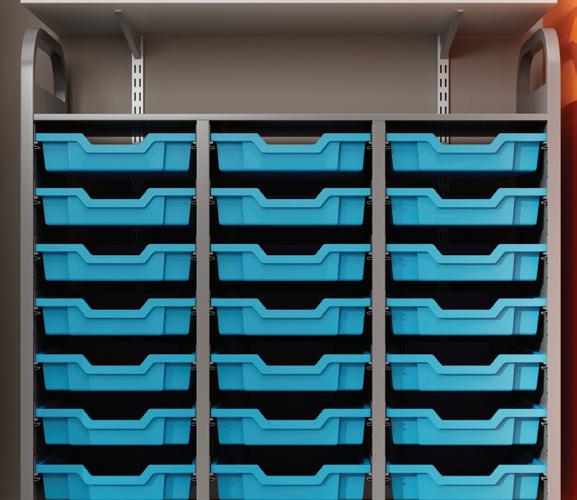


DEMCO ARRAY 866.938.6886 18
1
6

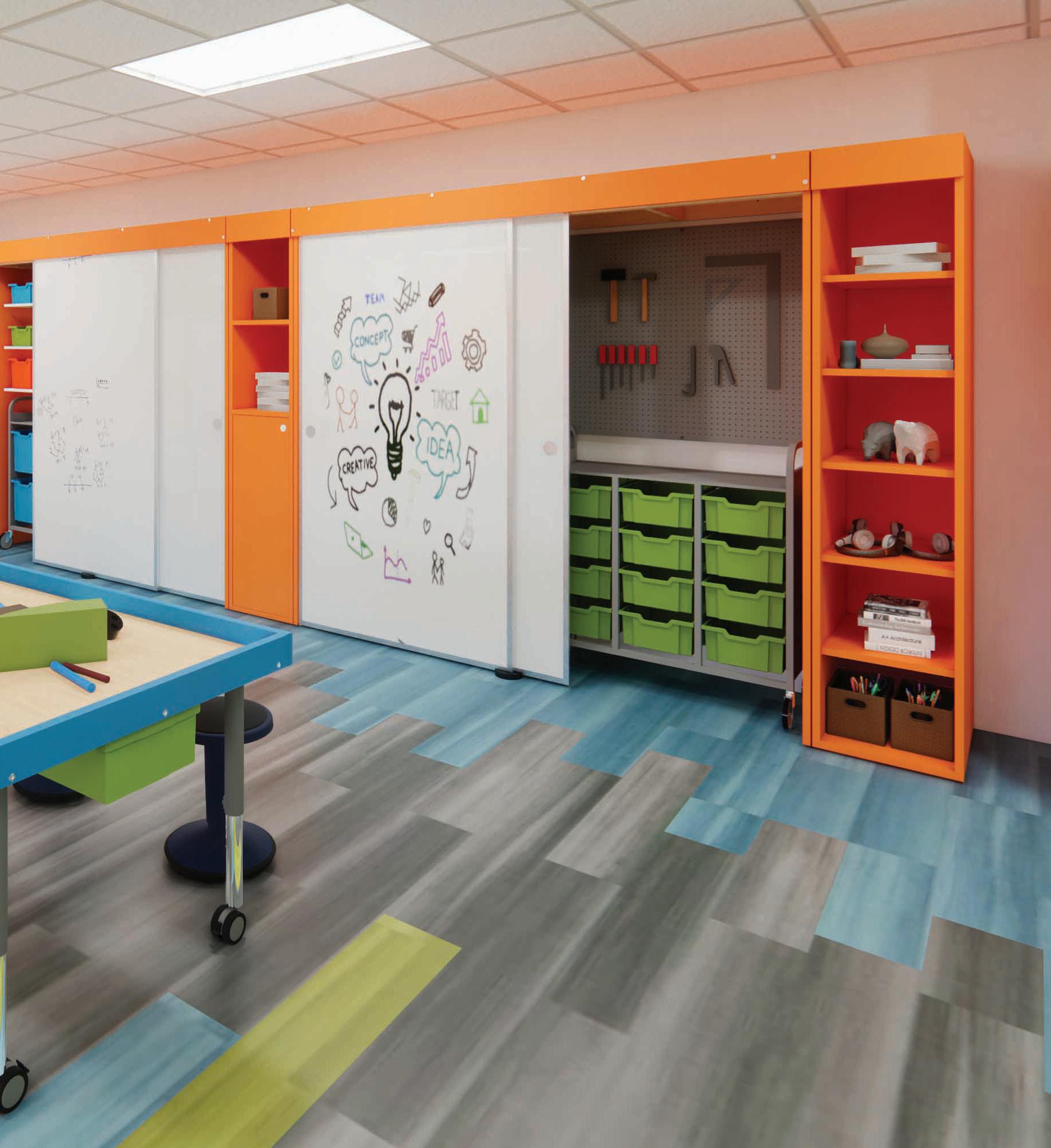
Adjustable shelves that adapt to changing needs
Track-free floor space for easy access
Convenient lock to keep supplies secure
Premium magnetic dry-erase boards also hide supplies
Handy pegboard for tools that are easy to retrieve
New! Cubby extensions in three configurations
2024 ISSUE 3 DEMCO.COM 19
1 Scan to shop the Show & Stow System 118 cubic feet of storage only uses 18 square feet 2 2 3 3 4 4 5 5 6 6 6
Collection Maintenance Explaining
to Non-Librarians
By Amanda Struckmeyer and Demco
Keeping the library collection up to date is an essential function of every librarian. This involves purchasing high-quality, relevant, new materials, but it also means removing items that are outdated or irrelevant. Through weeding, shelves become more attractive and easier to navigate. Using the library becomes more efficient for visitors and staff members, and circulation numbers go up.
Despite these benefits, weeding is difficult — and not just because of the time and energy it requires.
Many librarians experience pushback from colleagues, administrators, and others during the weeding process. Stacks of books being considered or removed can appear alarming to non-librarians. Some of the comments we might hear while weeding include:
• “These books cost money! We shouldn’t waste like this.”
• “We might need this book in the future.”
• “The more books we have, the better.”
• “This was my favorite book as a child!”
A recent survey showed
42% 37 %
of public libraries of school libraries have received criticism in response to collection weeding.**
COMMUNICATING CANDIDLY ABOUT WHY YOU NEED TO WEED
Whether concerns are based on stewardship of the budget, nostalgia, fear of sparsity, or
One library’s results
A year after starting a weeding process, speaker and high school librarian Kelsey Bogan saw an increase in circulation of
75%*
something else, our best response to nonlibrarians is to be open and honest. Share your criteria for withdrawing items, such as book condition, publication dates, circulation rates, inaccurate information, and space constraints.
25%
of public and school libraries
A recent survey showed have changed their weeding criteria over the last few years based on an increased awareness of unconscious racial bias, inclusion and diversity, and a need to be more ruthless about weeding because of decreasing library space.**
TAKING STEPS TO SET UP A SMOOTH WEEDING ADVENTURE
A proactive approach is even more effective. Explaining the weeding process to administrators and colleagues up front means they’ll know what to expect and won’t be alarmed when they see withdrawals. To do so, follow these steps:
• Share your weeding policy
o Create and distribute a document outlining your intent and criteria
DEMCO ARRAY 866.938.6886 20
Pro tip
Set up front-facing displays, circulate a book list, pop a new book in a colleague’s mailbox, or find other ways to bring attention to new arrivals.
• Ask staff members to check out any library materials they use
o This keeps the catalog up to date for search purposes and ensures that usage is recorded
• Show examples when talking about weeding
o Point out updated items that make older versions irrelevant
o Show an older item on a certain topic alongside a new one and ask staff which one they’d be more likely to choose
o Show an appealing shelf display compared to crowded, spine-out display, and ask staff which looks more inviting
• Have a plan in place for handling withdrawn materials
o Will you offer them to staff? Share them with students? Is donation an option?
• Share statistics to quantify your collection maintenance
o Total number of books in the collection
o Number of books withdrawn
o Number of books added
o Average publication date/item age at the start and end of the school year (this number is particularly powerful)
• Display and share new books
o Concerns about old books leaving the library are less likely to arise when people see the fantastic new materials you’ve curated
WEEDING IS VITAL AND YOUR USERS WILL THANK YOU
When others push back or challenge your weeding choices, respond in an upbeat, factual way. Ground your decisions in policy and be proactive in communication about the process. Weeding is a quick, cost-effective way to revitalize a collection, increase engagement, and boost circulation. It’s a necessary process that ensures libraries remain accessible and support the needs of all users.
As a professional, you know you’re doing the right thing — even when others need some convincing.
* "Weeding My H.S. Library" by Kelsey Bogan, dontyoushushme.com
** 2021 School Library Journal Collection Development and Weeding Survey Summary.
You’ve weeded. What now?
1. Donate to organizations
Consider the Friends of the Library for book sales, other libraries, or the public. Many organizations also welcome donations of secondhand or used books, and the American Library Association (ALA) provides a helpful Book Donation Programs resource guide with additional information and guidelines.
Scan for ALA Guide
2. Give to users
Ask your school’s art department or your local art center if they want books for projects, or put out a “free to keep” box for students or patrons.
3. Sell/fundraise
Host a library book sale. If books are appropriate for resale and your district or system allows, selling discarded books to raise money for your library may be an option. Try your local bookstore, book dealers, or online marketplaces.
4. Upcycle
Repurpose books for creative projects (origami, paper chains, crafted buttons), fun games and activities, STEAM challenges, and more!
Scan for more ways to use discarded books
2024 ISSUE 3 DEMCO.COM 21





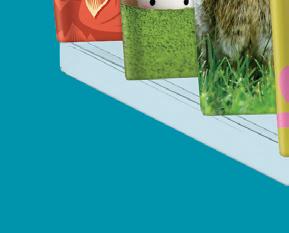








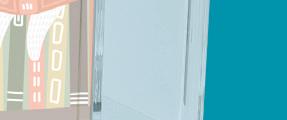

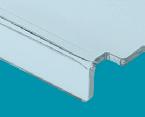

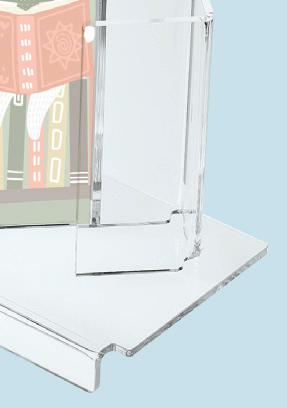
Unexpected Ways to Zig-Zag
By Amanda Struckmeyer
THESE HIGH-CAPACITY DISPLAYS ARE SURPRISINGLY VERSATILE, INSPIRING EXCITING IDEAS THAT EXTEND FAR BEYOND THEIR SMALL FOOTPRINT.
When I first purchased Zig-Zag Counter Displays for our school library, I anticipated using them to organize series books and to provide easy access to highly circulating titles. I appreciate the large capacity and the unique design that allows visitors to see many covers easily. These versatile pieces have surprised me, though. Here are just five of the ways they've worked for us:
1. SHOWCASE READ-ALIKES
Lots of readers love Raina Telgemeier’s work, but what do they read after finishing her books? We filled a ZigZag Display with titles that Telgemeier fans might love, and we placed it near the shelf where Drama , Smile , and the rest of the series is housed. Before we knew it, students were discovering new favorites. We’ve since created read-alike ZigZag Displays for Pete the Cat , Who Would Win? , and more popular series.
2. HIGHLIGHT FORGOTTEN TREASURES
didn’t move much. In a combined Zig-Zag Display, students could easily browse and retrieve related materials they may not have known about. And thanks to the space-saving design, we could include a wide variety of titles — including picture books, audiobooks, graphic novels, and other formats!
4. SHARE A CREATOR OF THE MONTH
Scan to shop Zig-Zag Displays
We highlight an author or illustrator each month, and Zig-Zag Displays give us the space and visibility to include plenty of books. Students might not realize that your library includes both picture books and chapter books by Jacqueline Woodson, or that Sophie Blackall has written and illustrated materials that span different genres and formats. Round out readers’ understandings of creators’ work by showcasing them all together!
5. HOST A GUESSING GAME
Every weeding report contains a number of appealing, engaging books that simply get lost on the shelf. Drum up interest in these too-goodto-withdraw titles by placing them in a Zig-Zag Display, where they’ll be highly visible and easy to grab. You don’t even need to label the display! Just pop the books in and watch them circulate.
3. EXPAND ON A POPULAR TOPIC
We noticed that our historical fiction books about the Titanic circulated heavily, but our nonfiction materials
Ready for some fun? Fill a Zig-Zag Display with books that have something in common. The common thread might be:
• All the titles begin with the same letter
• A certain word is present in all the titles
• All the books are written by authors with the same first name
• Every book has a rabbit on the cover
Challenge your library visitors to figure out the commonality. I advise having lots of books ready to refill the display; no matter what the surprise theme is, students will want to check them out!
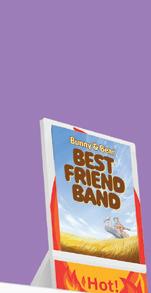
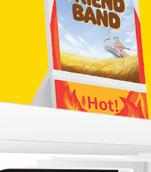



DEMCO ARRAY 866.938.6886 22
When in Doubt, Display
Whether we like to admit it or not, a book’s cover is often the first thing we judge when browsing the shelves for our next read. Including face-out displays in your space can shine a light on your diverse book collection and pique visitors’ interest in more subjects, genres, and authors.
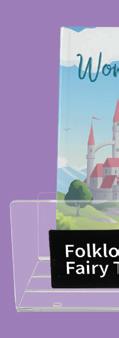




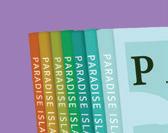





From graphic novels and early chapter books to large picture books, a Deluxe Acrylic Browsing Bin converts a standard library shelf into a face-out, flip-through display — stopping readers in their tracks and encouraging browsing.



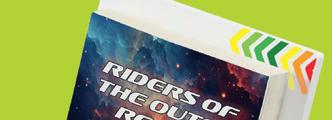

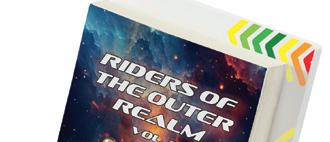
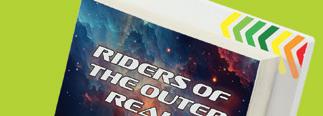





Themed Made Ya Look Display Easels prop books up and help spotlight specific books such as a new release by a popular author or a book that fits a curated theme. Plus, when empty, fun expressions encourage readers to check back soon.
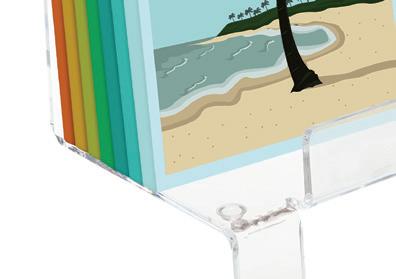


An Acrylic Book Series Display helps display popular book series together. When a book from a book series is checked out, the next one behind it moves to the front of the display, ensuring readers know exactly where to go when they finish a book and are on the hunt for the next one.
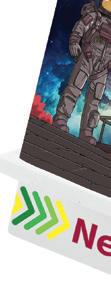




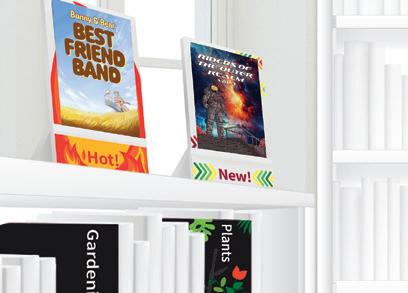



A Plastic Shelf-End Media Display Bin can help convert unused end panel space into face-out displays and highlight additional books that might capture the interest of readers — perhaps even encouraging them to explore an entirely new section in the library.



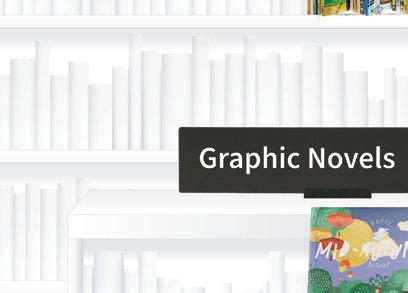
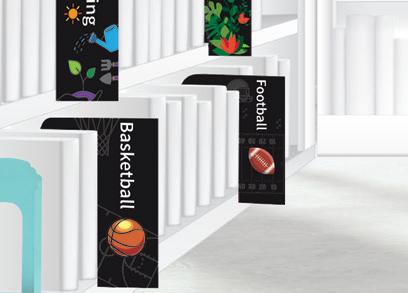
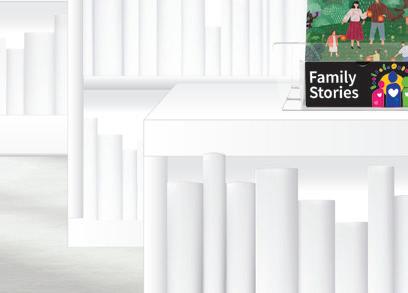





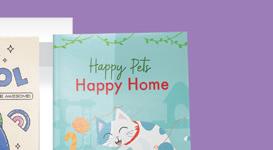
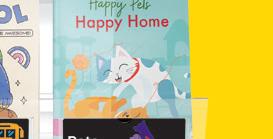










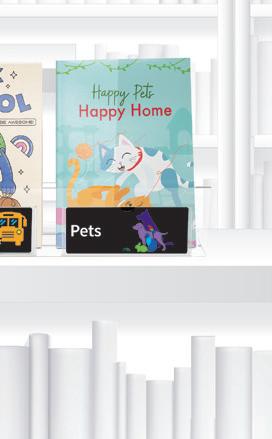








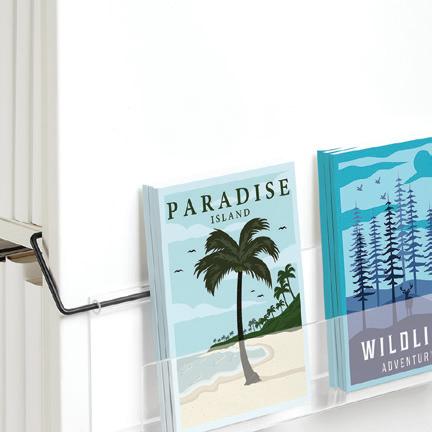






2024 ISSUE 3 DEMCO.COM 23
Scan to shop ShelfSpark products

The
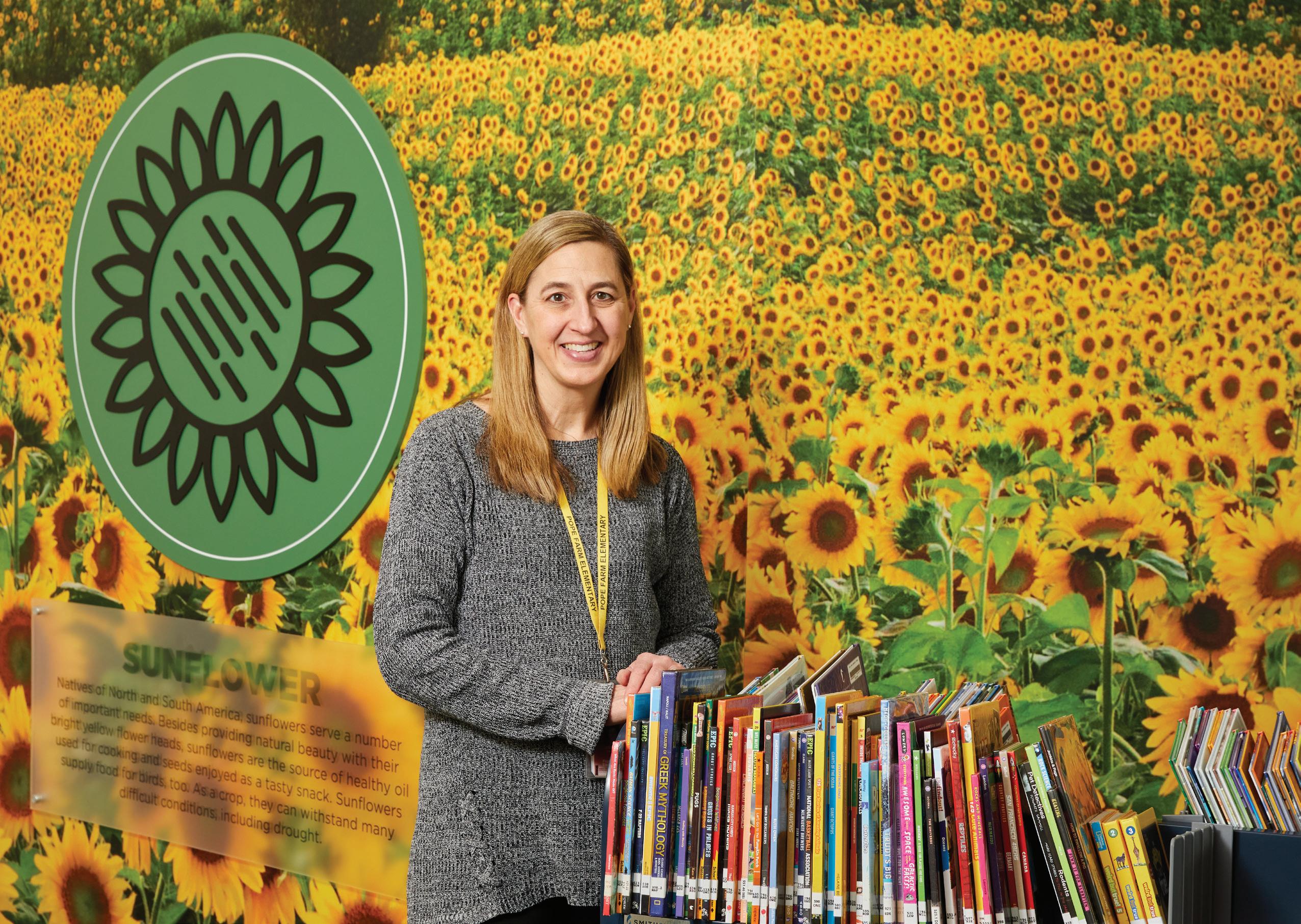
SEE HOW ONE ELEMENTARY SCHOOL LIBRARIAN REMERCHANDISED HER COLLECTION
By Demco
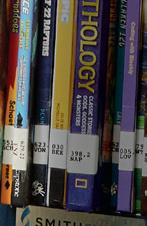


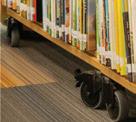

of ShelfSparking Library

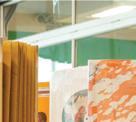

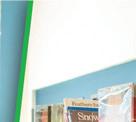
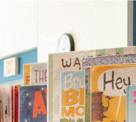
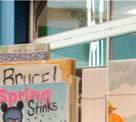
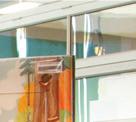
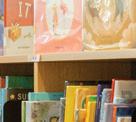
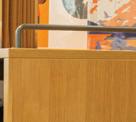

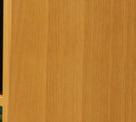

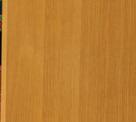


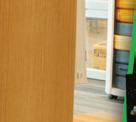


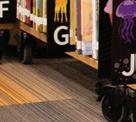

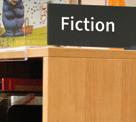

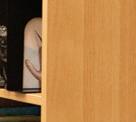
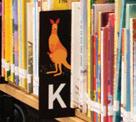
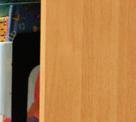

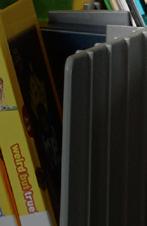
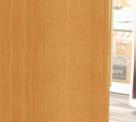
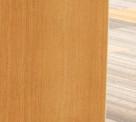

During the summer of 2023, Demco experts helped librarian Deb Dagitz leverage face-out displays, signage, labels, and more to ShelfSpark her school’s library. The updated space invited exploration, inspired excitement, and boosted circulation among students. Read on to discover Dagitz’s insights, solutions, and advice for other librarians who are ready to remerchandise their shelves — and reap the benefits!
Scan to learn more about ShelfSpark
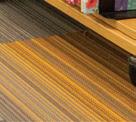
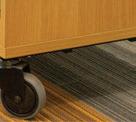
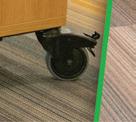
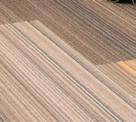
Before After
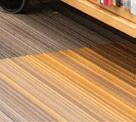
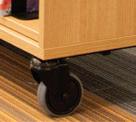
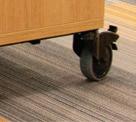
Library: Pope Farm Elementary School Library
Librarian: Deb Dagitz
Grades: Pre-K–4
Students: 429
Collection Size: 10,477 titles
Library Size: 3,233 sq. ft.
Results at a Glance:
75% 4+ 20%
increase in checkouts in Pets category times as many Origami books circulated circulation increase in country and state books
DEMCO ARRAY 866.938.6886 24
ABC
Shelves
ABCs B


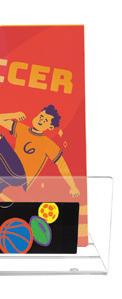
B IS FOR BROWSABILITY
Dagitz’s goal in remerchandising her library shelves was to make more books visible to kids, especially young learners. Knowing face-out books would be easier to browse through, she incorporated various Demco displays, including acrylic book series displays, zig-zag counter/ shelf displays, and browsing bins. Students immediately liked the change to her collection. “[It’s] more visible and easier to browse through. They can find it so much easier that way.”
C A Sparking Shelves
Students read more, understand more, and are more likely to continue reading when they have the opportunity to choose what they read.
— Richard Allington and Rachael Gabriel in "Every Child, Every Day" for ASCD
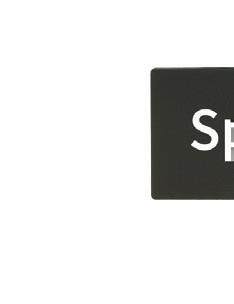
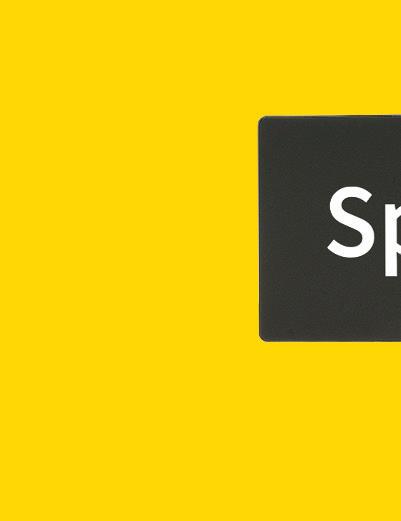


A IS FOR AUTONOMY
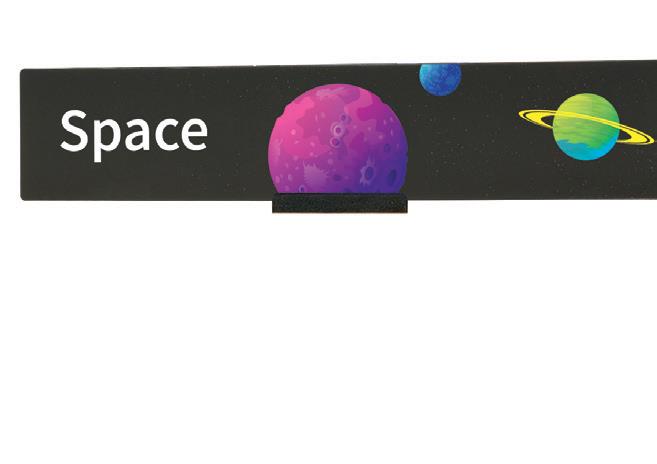

Combining clear signage and face-out displays makes it easier than ever for readers to find books on their own. This is especially true for young readers. Dagitz found Demco’s bookshelf dividers and signs helpful in guiding readers, saying that the combination of both formats was ideal. “The better the signage, the better kids can find things ... that’s huge to have the letters, have the different topics ...”
Dagitz also incorporated a variety of display products to make books more visible to readers. “Ones that I know kids are always asking for — like books about unicorns — can be grouped in one spot and easier to visibly find more independently.” Even when kids don’t take a book from within a display, Dagitz sees how turning some covers face-out helps guide readers to certain series or topics.

C IS FOR CIRCULATION BOOST
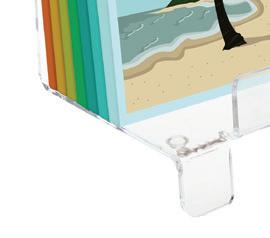

Beyond the numbers, Dagitz noticed an increase in checkouts because of how she spends her time between classes. Prior to ShelfSparking, she mostly straightened up shelves. Now she spends most of her time restocking emptied displays. “I absolutely love the [series displays]. They’re so easy to reshelve. They’re the ones that come and go a lot.” Because Dagitz can just grab a chunk of books to replenish empty displays, she spends less time straightening and restocking than before. The same is true of the zig-zag displays, which she credits for a 75% increase in checkouts within the Pets category. Restocking is easy because she can simply pull from the shelves below.
Continued on next page >>
2024 ISSUE 3 DEMCO.COM 25
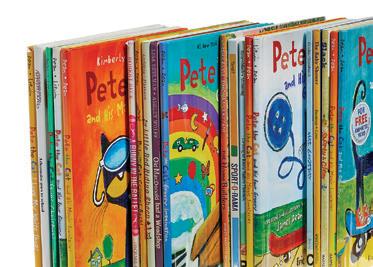

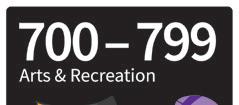
D G




D IS FOR DEEPER CIRCULATION
Dagitz views her various Demco display products as tools in her librarian toolbelt, and she’s very strategic about where and how she uses them. For example, in the zig-zag displays she likes to balance popular books with others that don’t circulate as much. “We can share popular ones, but then we can also showcase others that maybe somebody didn’t know about.” Origami books are a great example. More than four times as many origami books circulated in fall of 2023 (23 books) compared to fall of 2022 (5 books).
Dagitz employs a similar strategy with her browsing bins, which can hold three columns of picture books. A bin in her Fiction section, for example, has two rows of ever-popular sports books, but the third row is reserved for countries and states. Readers looking for sports books can find them more easily now, but they’re also checking out the country and state books that were previously hard to find — creating a 20% boost in circulation in country and state books compared to last fall.
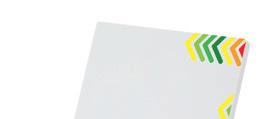
EF


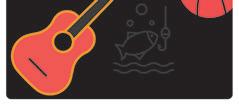

E IS FOR EASY




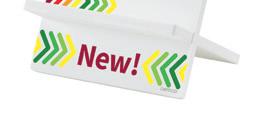
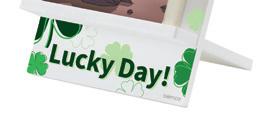
Dagitz shared that the new shelving format makes life easier for everyone — sta , volunteers, and especially the kids. Beyond making browsing easier for readers and replenishing easier for sta , Dagitz also sees less mess because of ShelfSparking. Students commonly pull books from a shelf of spine-out titles, then decide they don’t want them. In a best-case scenario, they drop them in the book return, meaning more books to be reshelved later; in the worst, they leave them scattered on the floor or incorrectly reshelved. These issues are much less common when kids are browsing through displays and bins. “It keeps the library less messy, because even if they pull some from those series holders or from that bin, they can put them back in that spot.”


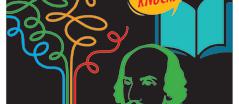

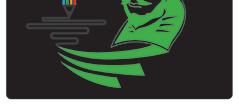
F IS FOR FUNCTIONAL

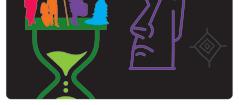
Dagitz happily reports that the new signage and displays have been well received by everyone who enters the library. “We are loving it ... not just that it looks nice, but that it is practical and is getting books in kids’ hands.” Dagitz’s new acrylic displays and eye-catching signage have helped create a space she can be proud of — especially since they provide better accessibility to reading materials for the kids. Aesthetic appeal is not the top reason to ShelfSpark, but a warm and welcoming space does make it more likely that kids will enjoy visiting, browsing, and finding something to check out.


G IS FOR GUIDANCE

For all the librarians out there looking to step up their shelf merchandising game, Dagitz recommends starting small to see what works. “I would definitely try di erent [displays] because they’re used di erently, and you end up liking them for di erent purposes." This is especially good advice when you have budget or space constraints. Start small and expand as you’re able — then watch how easily your readers find what they’re looking for!
Start browsing at demco.com/shelfspark.
Bonusread!
CAN'T GET ENOUGH SHELFSPARK?
Discover the four key components of creative shelving that doubled (and in some categories tripled) circulation at Wisconsin’s Yahara Elementary School. Scan to read more
DEMCO ARRAY 866.938.6886 26




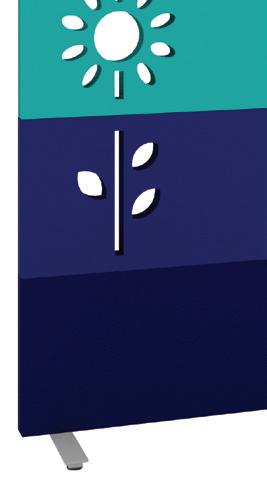



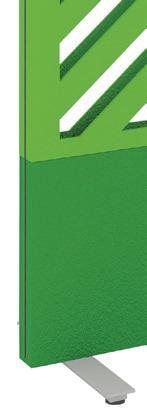

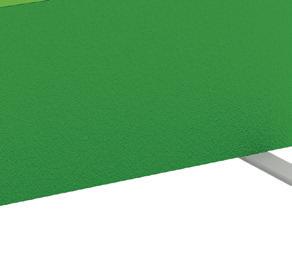


2024 ISSUE 3 DEMCO.COM 27 No shushing required
Scan to shop Acoustic Solutions Swiftspace Mobile DOS Double Seat Booth Acoustic Ceiling Panels Acoustic Wall Panels Demco Free-Standing Room Dividers
Minimize noise pollution in your library and create a space that meets everyone’s unique needs.


Creating Collaboration Between Public and School Libraries
FIVE EASY STEPS TO DEVELOPING MEANINGFUL PARTNERSHIPS
IN YOUR AREA
By Amanda Struckmeyer

Public and school libraries share a common goal: to provide a safe, welcoming environment with access to materials and information in a variety of formats. That means collaboration between public and school librarians can be a win-win for everyone involved — if it’s done well. Librarians get more bang for their worktime buck, and patrons/students benefit from the resources of two facilities instead of one.
DEMCO ARRAY 866.938.6886 28
Collaboration often sounds overwhelming, but let’s look at how we can lay the groundwork for successful collaboration using some manageable, approachable steps. As you begin to partner with other libraries, keep your common goal at the center of everything you do. Think big — even if you’re starting small. To help with the process, check out the toolkit below the quote created by AASL, ALSC, and YALSA (divisions of the American Library Association). It includes context, background, rationale, ideas, and advice on building, maintaining, and increasing the effectiveness of partnerships.
Here are the five steps you can take to benefit your community
1. REACH OUT
Call or email your school or public library counterpart. Try to choose one in the same geographical area as your library so you can both better support patrons/students where they live and attend school. Get to know each other and become familiar with programs and ongoing initiatives. Set up regular meetings, alternate locations if you’re meeting in person, and stay considerate of scheduling conflicts.
2. VISIT AND LEARN
3. GET INSPIRED
Read about successful, mutually beneficial partnerships and collaborations between existing school and public libraries. Look for ideas that might work well in your community. Regional topics, trends, and seasonality are a wonderful place to start. Consider promoting student book reviews at the public library, inviting students to help plan community programming, or donating out-of-rotation books to students for art projects.
4. BUILD A ROADMAP
Keep your common goal at the center of everything you do. Think big — even if you’re starting small.
If you’re a school librarian, try to visit the public library. Meet the staff, browse the collections, and attend a program if you can. If you’re a public librarian, get clearance to enter the school as a visitor and explore what’s offered. You may even be able to coordinate a few classroom pop-ins or a tour of the school. Talk to students about what they can expect when they visit a public library and encourage them to attend programming. These visits will deepen your understanding of one another’s libraries, jobs, patron base, and resources.
Together with your school or public library counterpart, identify collaborative initiatives that make sense for your community. Think about actions you can take now, such as cross-promotion of one another’s programs, as well as longer-term goals.
As an idea, you might recognize that teachers could benefit from deposit collections (thematic materials that are delivered and picked up). Maybe you set a goal to arrange for the school district’s delivery system to add a stop at the public library. This would allow for efficient transportation of deposit collections between the public library and the school. Make a list of steps you’ll need to take to make your collaborative goals come true.
5. SHOW GRATITUDE
Be sure to send thank-you notes to anyone involved in your partnership. Include everyone on the library webpage from the person who sets up the meeting room to the library director and school principal. They’ll appreciate a thank-you email or card and be more likely to help you again in the future.
2024 ISSUE 3 DEMCO.COM 29
Scan to explore resources for collaboration inspiration
Pacific Library Partnership
ALSC Blog
Tiny Tips for Library Fun
•
•
•
Scan to explore the Public Library & School Library Collaboration Toolkit














































 By the Demco Customer Council
By the Demco Customer Council


















SIMPLE STEPS TO CREATE A Positive Library Experience for Kids
School libraries are often viewed as sanctuaries of knowledge, exploration, and growth. Yet, for some students, they can also be associated with discipline — a place where quietness and strict rules dominate. However, transforming the school library into a hub of excitement and creativity is not just a possibility; it's a necessity. The following ideas are ways to make the school library a space that students eagerly embrace instead of fear.
PUNISHMENT-FREE ZONE
Begin by working with school administrators to find an alternate location to the library for activities like detention. Using this space as a holding location for students who are disruptive in

their classrooms creates a dynamic that the library is a place of discipline and getting in trouble. Students won’t want to be seen in the library because of the potential implications about their behavior. Likewise, they may adopt a negative attitude about the space or themselves within the library because of the perceived labels.
POSITIVE ROLE MODELS
Don’t ask library media specialists to fill a role as a disciplinarian. When librarians enforce discipline in outside settings such as the lunchroom, playground, or before and after school, you set them up for challenges in the library. Outside of the classroom students tend to push more


DEMCO ARRAY 866.938.6886
30







Ultimately, transforming the school library requires a shift in mindset — not just for librarians and students, but buy-in from administration and parents as well.

boundaries, so it’s easy to lapse into scenarios that need redirection and create bad sentiments toward librarians. It’s important that librarians remain people that students feel comfortable approaching in a safe and open way.
GET LOUD
Gone are the days when libraries were just about silence and solitary reading. Libraries can and should be bustling hubs of collaboration and innovation. Introducing flexible spaces that accommodate group work, discussions, and even noise can redefine the library as a dynamic learning environment. Incorporating sound-absorbing
decor and providing noise-cancelling headphones can help keep the library at a reasonable decibel for independent workers, while still allowing small group giggles and activity-based programming.
CURATE DIVERSITY
Stocking the shelves with diverse books, magazines, digital resources, and multimedia materials can make the library a captivating place for students. By reflecting a variety of interests, cultures, and viewpoints, the library becomes a space where everyone feels represented and engaged. You can incorporate these diverse topics into displays and programming as well. Students who choose to see themselves reflected in their media should know it’s available and celebrated.
BEYOND BOOKS
Libraries should encourage exploration beyond textbooks. Incorporating media that students feel excited about keeps them coming back. Offering a range of audiobooks, interactive technology, and hands-on activities can kindle curiosity and allow students to learn in a way that fits them best. Library makerspaces can provide crucial STEAM opportunities and are a wonderful way to keep students excited about library spaces.
CELEBRATE STUDENTS
Giving students a say in the library’s layout, events, and media selection fosters a sense of ownership. Encouraging them to suggest new materials or organize book clubs and discussions can transform the library into a community-driven space. Showcasing student projects from the makerspace, a small student art gallery, or a bulletin board featuring student voices is a great way to get them not just coming back, but showing the space o to others as well.
By implementing these strategies, the school library evolves from a place of punishment or strict silence to a vibrant center of learning and exploration. It becomes a space where students actively seek knowledge, collaborate on projects, and cultivate a love of learning that extends beyond the classroom. Ultimately, transforming the school library requires a shift in mindset — not just for librarians and students, but buy-in from administration and parents as well. When the library becomes a place students eagerly anticipate visiting, it becomes a cornerstone of their educational journey.
2024 ISSUE 3 DEMCO.COM
31


4 Ways to Optimize Your Makerspace
A MAKERSPACE ISN’T JUST ABOUT THE STUFF — IT’S ABOUT THE EXPERIENCES.
By Diana Rendina and Demco


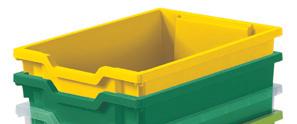






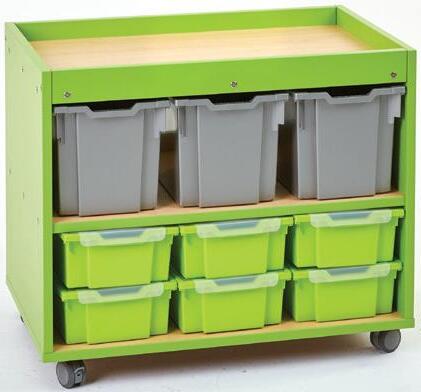
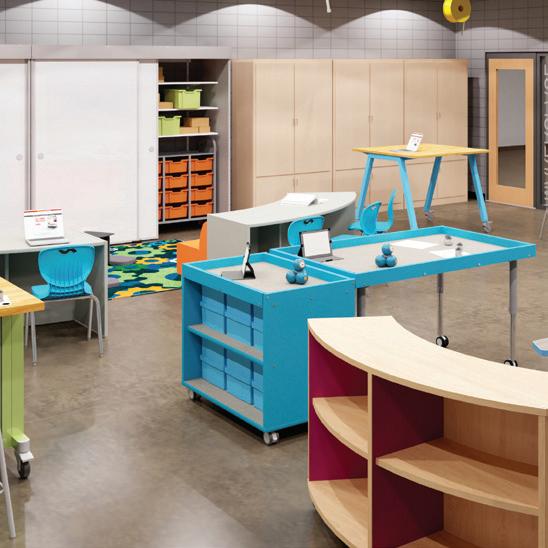
Ask yourself what you want students to get from their makerspace experience. While there’s no one-size-fits-all shopping list for a makerspace, asking yourself what experiences you want children to have and how your makerspace will support existing curriculum can help you prioritize. The following are ways to optimize your makerspace.
1. STAY ORGANIZED
To figure out the best type of storage solution for your makerspace, assess how tools and materials are used. For example, are there tiny pieces and components that need to be organized in smaller bins to save time? Do you run out of cardboard on a regular basis?
Spend some time noting the di erent tools and materials children use and think about which supplies logically go together. Doing so will help you figure out the best way to organize your makerspace.
2. FIND THE RIGHT CART FOR THE RIGHT TOOLS
Shared access to tools and materials provides equal learning opportunities for all. While moving bins of supplies around can work for a time, you’re probably going to want to incorporate a storage cart to easily move supplies to di erent areas.
Identify challenges with your current makerspace and invite children to share what they like — and don’t like — about your space. You might end up realizing that you need di erent makerspace carts for the di erent types of tools and materials.
3. SHOWCASE PAST PROJECTS
Displaying past creations in your makerspace can inspire children to try to tackle something similar with their own twists. This could be something as simple as showcasing past projects on top of a shelving unit or in a trophy case in a hallway. Doing so lets children know what’s possible with some brain power and creativity.
4. EXPLORE WHAT OTHERS ARE DOING
Many educators and librarians share their tips on blogs, TikTok, and X (formerly known as Twitter). Start by following hashtags like #makerspace, #makered, or #elemaker (for elementary makerspaces). These hashtags can be great to find new people to follow.
Remember, every makerspace is di erent. Try di erent things, experiment, and ask children what they'd like to make. The important thing is to keep making.
866.938.6886
DEMCO ARRAY 32










Turn any space into a makerspace




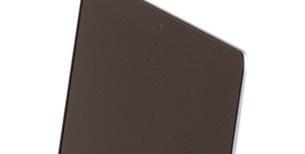

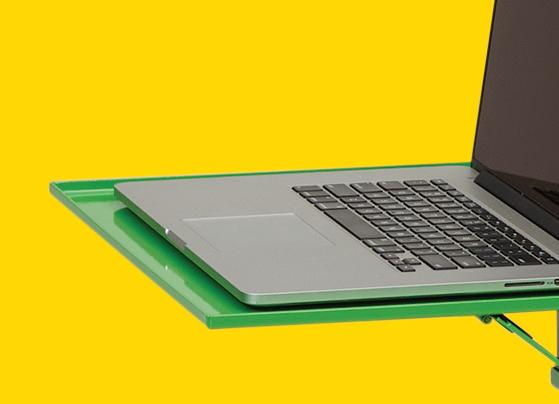










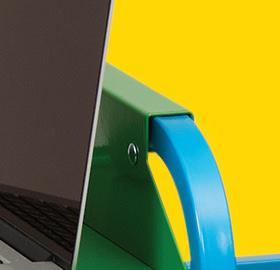



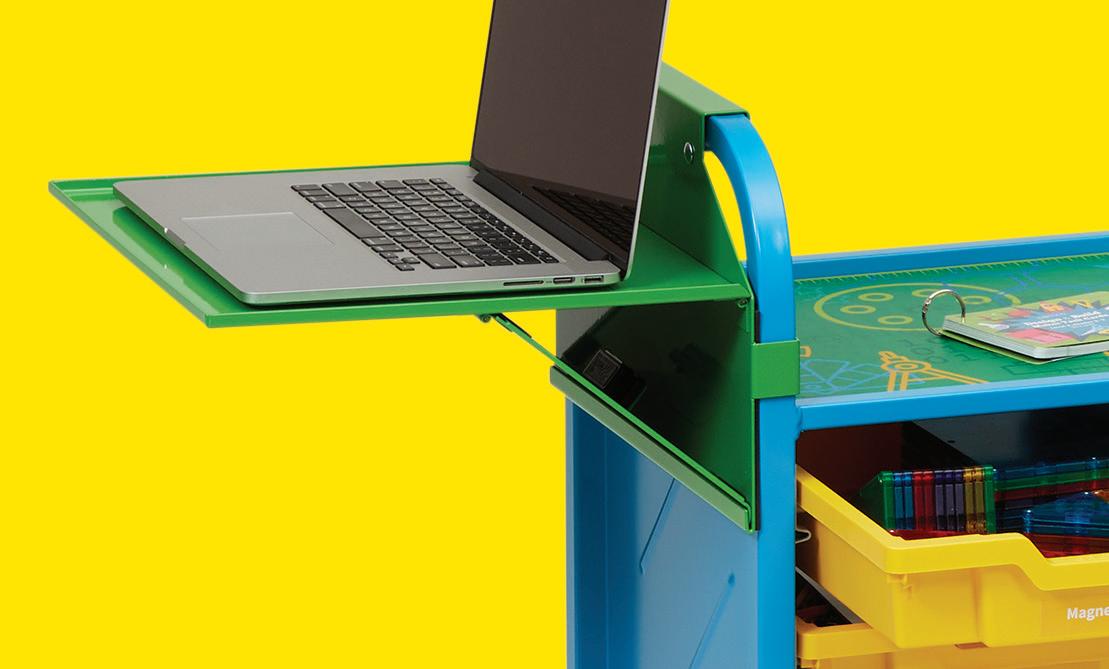







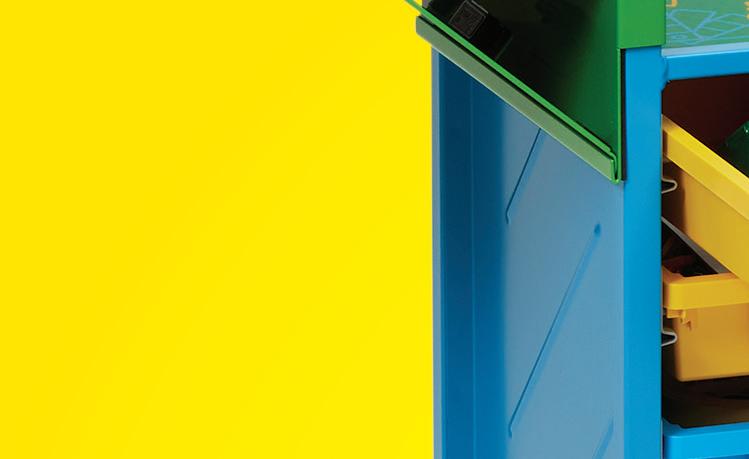




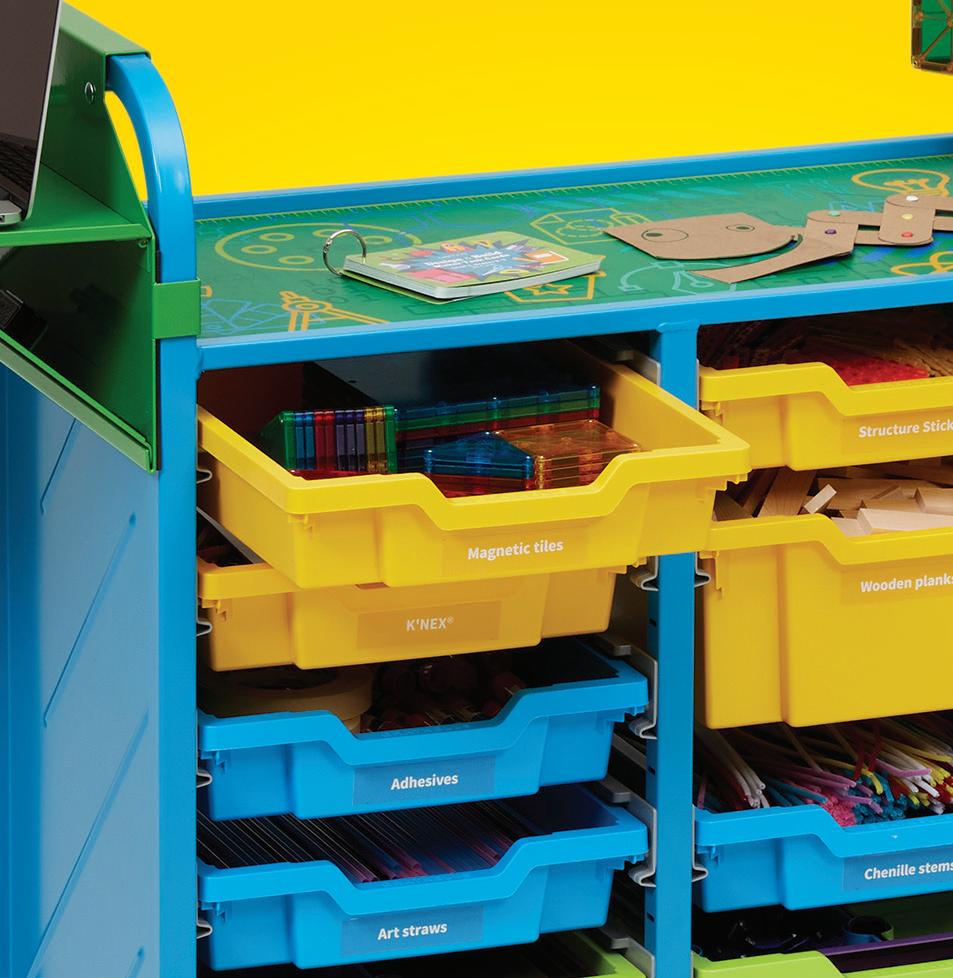




Help kids build their critical thinking skills and confidence through hands-on learning and collaborative STEAM activities.












The all-new Demco Makerspace Cart 2.0 includes:
• More than 40 ready-to-go STEAM activities to fuel learning
• 17,000 components to inspire creativity








• Pre-labeled storage trays to help keep pieces and parts organized

33
Scan to shop the Demco Makerspace Cart 2.0
Create a space as unique as your visitors


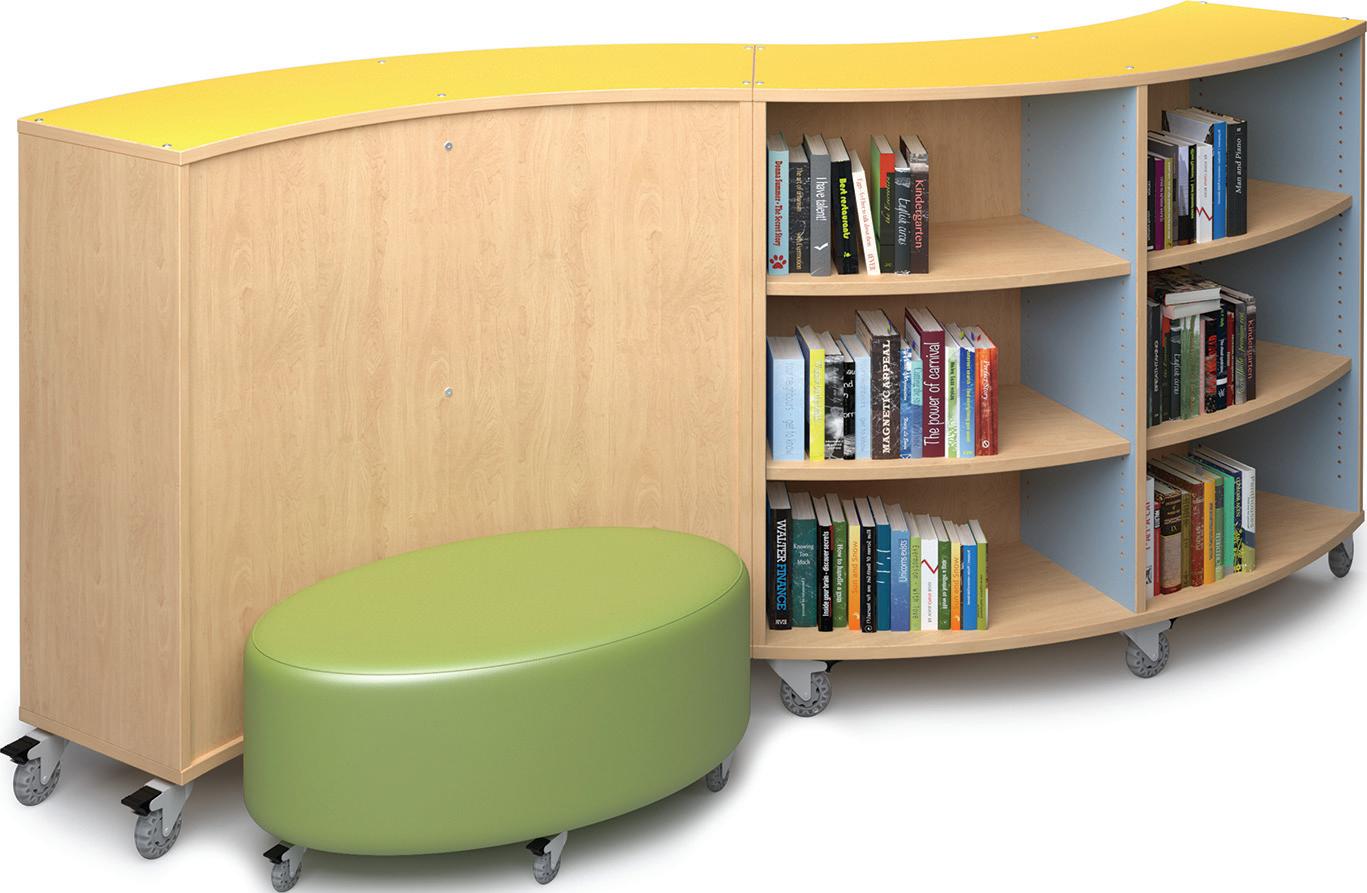

From reading nooks that fuel creativity to book displays that inspire new interests, ColorScape® can help you create an engaging, one-of-a-kind space.




to explore the ColorScape Collection
Scan









































































































































 Chad Edwards, President
Chad Edwards, President
























































































































































































































































































 By Amanda Struckmeyer and Demco
By Amanda Struckmeyer and Demco












































































































































































































































































































































































































































































































 By the Demco Customer Council
By the Demco Customer Council













































































































